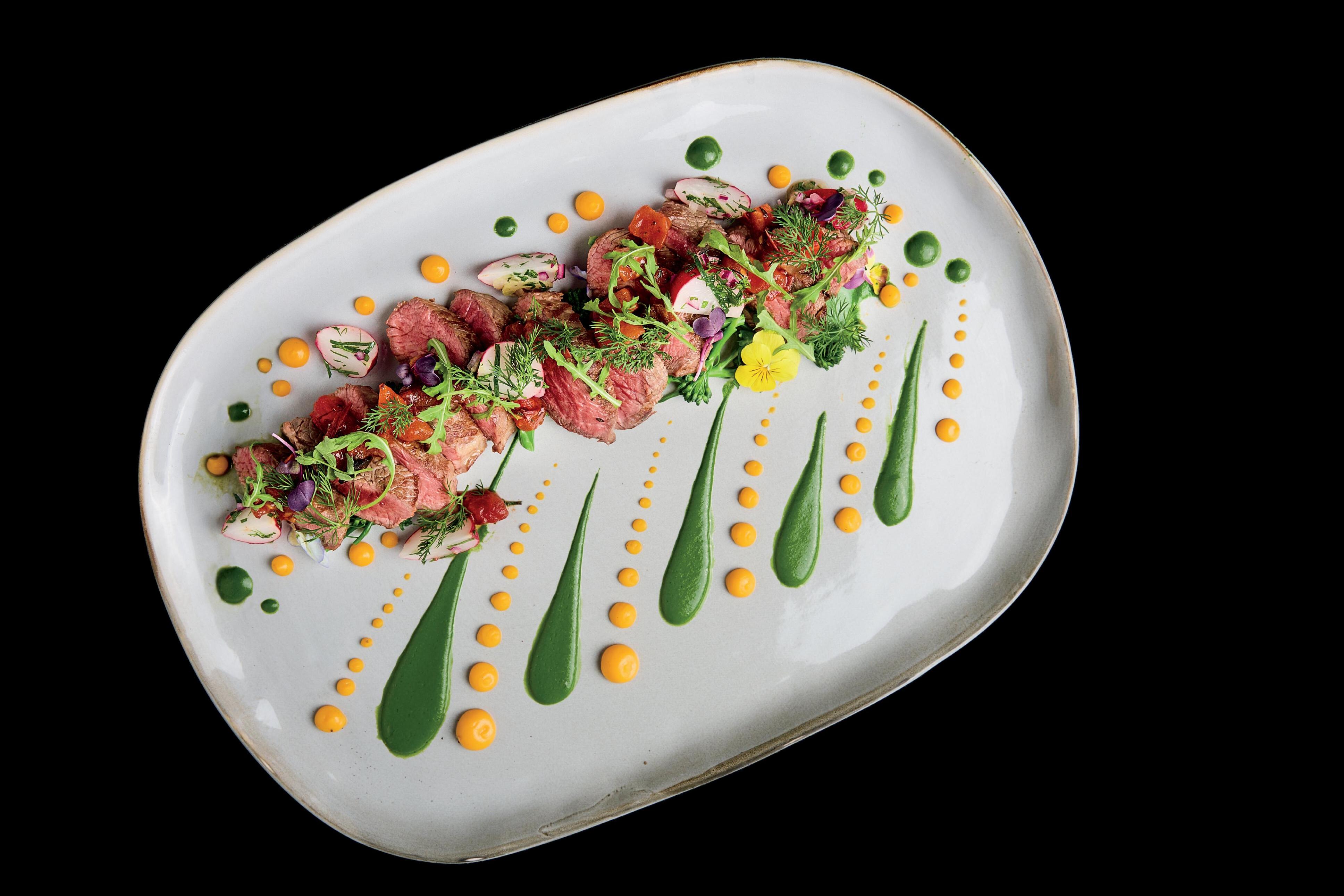CATERING QUEEN OF NYC
MODERN TIKI MOVEMENT

CATERING QUEEN OF NYC
MODERN TIKI MOVEMENT
40 RESTAURANT LEADERS UNDER 40 ARE SHINING BRIGHTER THAN EVER
«CHEF MARY LOU DAVIS’ MOMENT
THE FORMER HELL’S KITCHEN CONTESTANT IS BRINGING HER FEARLESS FLAVOR AND CHARISMA TO IDA CLAIRE
ISLAND FLAVORS
FRANCHISING FAT PATTY’S
PLUS
JAMES BEARD AWARD-WINNING
CHEF DANIELA SOTO-INNES RECLAIMS HER ROOTS








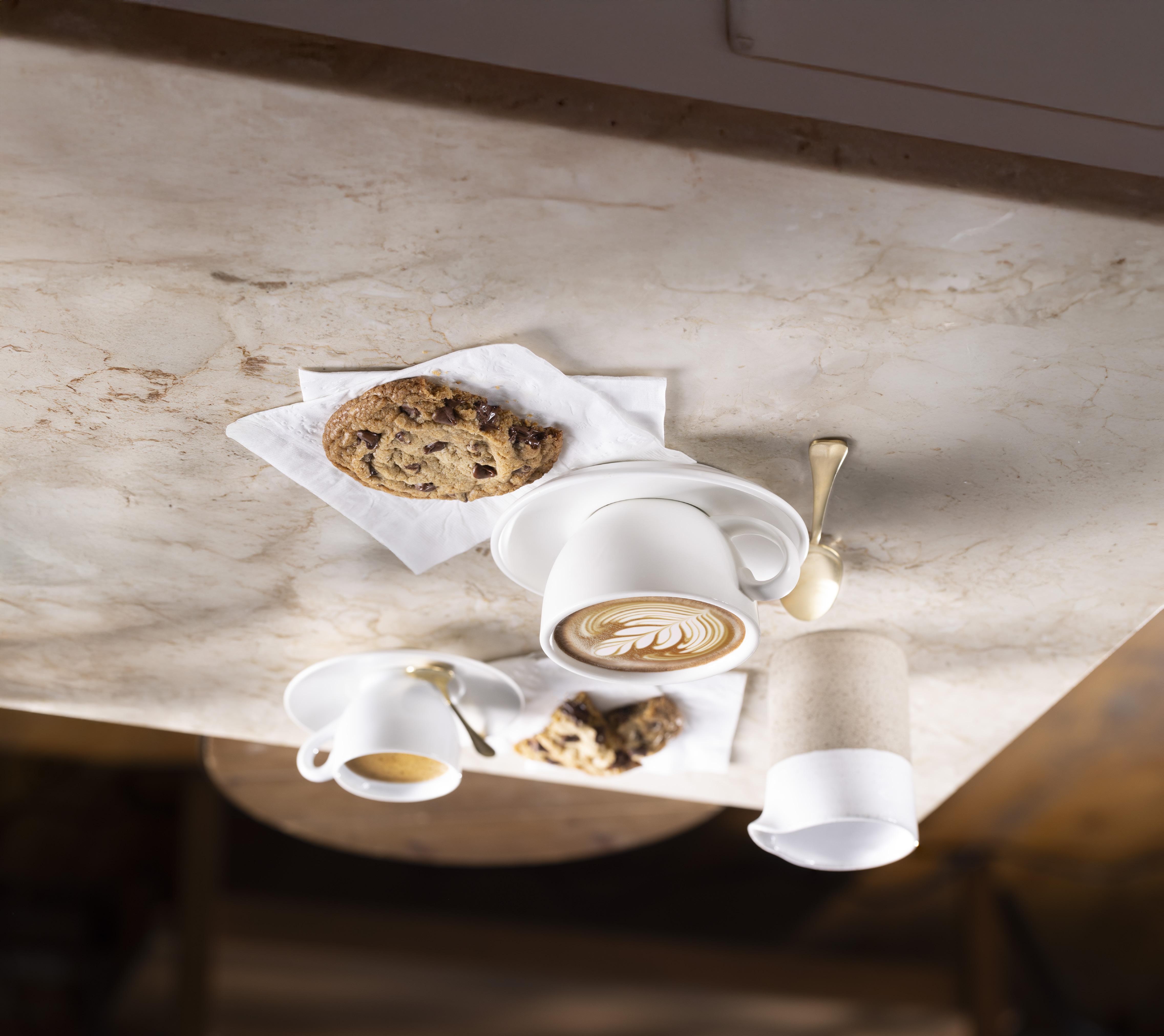
“Hell’s Kitchen” alum Mary Lou Davis leads this year’s class of Rising Stars as she brings her fearless creativity to the kitchen of FB Society’s Ida Claire. From chefs and beverage directors to COOs and social media managers, this year’s class of 40 young restaurant leaders are united in creating the progressive future of foodservice.
With her new restaurant Rubra, Daniela Soto-Innes—named “The World’s Best Female Chef” in 2019 by The World’s 50 Best Restaurants—is turning back to the land, blending heritage, nature, and a vision for women in the culinary world.
Restaurants across the U.S. such as MAI-KAI, Polly’s Pies, and Little Sister are drawing on cultural roots, nostalgia, and fresh ingredients to evolve the idea of tropical cuisine.
21
In a time when there’s no shortage of reasons to unplug and drift away, a new generation of tropical cocktail bars are embracing escapism with fresh energy.


FIRST COURSE
7 From Server to Owner of Friendly’s
A former Friendly’s waiter turned franchisee turned franchisor, Amol Kohli is leading BRIX Holdings into its next era.
8 Social Media is the Secret Sauce
A recent report from Rubix Foods shows how social media influences Gen Z’s F&B purchasing decisions.
BACK OF HOUSE
43 New York’s Caterer-in-Chief
WOMEN IN LEADERSHIP From downtown kitchens to highprofile events, Deborah Miller has shaped New York City’s culinary heartbeat with her catering enterprise, which remains rooted in a deeply personal ethos.
ON THE RISE Boasting an AUV of over $2 million, Fat Patty’s has big plans to expand on the East Coast using a huband-spoke model for future markets.
48 Fast, Fresh, and Focused
BEHIND THE SCENES Under Chad Offerdahl’s leadership as co-CEO, The Big Biscuit has scaled to nearly 30 locations while maintaining tight systems and a culture rooted in consistency and speed.
ALSO IN THIS ISSUE
4 Editor’s Welcome 47 Advertising Index
the express written consent of WTWH Media, LLC. FSR (ISSN 2325-2154), USPS PUBLICATION #9690 is published monthly by WTWH Media, LLC, 1111 Superior Avenue Suite 1120, Cleveland, OH 44114. Periodicals postage paid at Cleveland, OH and at additional mailing offices.
POSTMASTER:
EDITORIAL
VP, EDITORIAL DIRECTOR: FOOD, RETAIL, & HOSPITALITY Danny Klein dklein@wtwhmedia.com
FSR EDITOR Callie Evergreen cevergreen@wtwhmedia.com
QSR EDITOR Ben Coley bcoley@wtwhmedia.com
ASSOCIATE EDITOR
Sam Danley sdanley@wtwhmedia.com
ASSOCIATE EDITOR Satyne Doner sdoner@wtwhmedia.com
SVP, AUDIENCE GROWTH Greg Sanders gsanders@wtwhmedia.com
CONTENT STUDIO
VP, CONTENT STUDIO
Peggy Carouthers pcarouthers@wtwhmedia.com
WRITER, CONTENT STUDIO Drew Filipski dfilipski@wtwhmedia.com
WRITER, CONTENT STUDIO Ya’el McLoud ymcloud@wtwhmedia.com
WRITER, CONTENT STUDIO Abby Winterburn awinterburn@wtwhmedia.com
DESIGN
ART DIRECTOR Erica Naftolowitz enaftolowitz@wtwhmedia.com

2024 REGIONAL GOLD AWARD: PUBLICATION DESIGN
2023 NATIONAL GOLD AWARDS: FRONT COVER (PHOTO), BEST USE OF COLOR NATIONAL SILVER AWARD: BEST USE OF TYPOGRAPHY
2016 MAGAZINE OF THE YEAR TOP 10 AWARD
2015 MAGAZINE OF THE YEAR FOLIO: Eddie Awards 2022 BEST FULL ISSUE
SPONSORED CONTENT
® SALES & BUSINESS DEVELOPMENT
VP SALES: FOOD, RETAIL, & HOSPITALITY
Lindsay Buck lbuck@wtwhmedia.com
VP, BUSINESS DEVELOPMENT
Eugene Drezner 919-945-0705 edrezner@wtwhmedia.com
NATIONAL SALES DIRECTOR Amber Dobsovic 757-637-8673 adobsovic@wtwhmedia.com
NATIONAL SALES DIRECTOR Edward Richards 216-956-6636 erichards@wtwhmedia.com
NATIONAL SALES MANAGER Tom Boyles 662-607-5249 tboyles@wtwhmedia.com
CUSTOMER SERVICE REPRESENTATIVE Tracy Doubts 919-945-0704 tdoubts@wtwhmedia.com
ADMINISTRATION
CEO Matt Logan mlogan@wtwhmedia.com 919-945-0704 www.fsrmagazine.com/subscribe
FSR is provided without charge upon request to individuals residing in the U.S. who meet subscription criteria as set forth by the publisher.
REPRINTS
THE YGS GROUP
800-290-5460 fax: 717-825-2150 fsrmagazine@theygsgroup.com
Sponsored content in this magazine is provided to the represented company for a fee. Such content is written to be informational and nonpromotional. Comments welcomed at sponsoredcontent@ fsrmagazine.com.
FOUNDER Webb C. Howell
FSR-magazine














IT’S EASY TO FALL INTO THE TRAP of feeling like you’re somehow “less than” whenever you start comparing yourself to others. You may be looking at the restaurant down the street from yours and wondering how they’re attracting more foot traffic, or judging yourself for not having as many locations open as a larger franchise. For us at FSR , we’re the little sister to our larger QSR counterpart, so we’re always the underdog, running to catch up, seeing our smaller numbers next to their larger metrics.
But being that tighter, niche group is part of our strength. It means we’re able to be a bit more nimble and cover indie superstars and lesserknown chefs who deserve the spotlight, but aren’t getting that coverage elsewhere. We can shine a light on an under-appreciated section of the restaurant industry. It’s not always a competition, or at least, not in the traditional sense; our audience is engaged and cares about the guest and employee experience above all. That’s why full-service restaurants exist. It’s where young chefs go to learn the ropes and flex their creativity; it’s where budding marketing professionals can take risks in developing a quirky brand voice; and it’s where on-the-rise leaders learn how to overcome the unique challenges this side of hospitality poses.
This year’s class of Rising Stars: 40 Restaurant Leaders Under 40 exemplifies these strengths perfectly, from beverage directors and COOs to social media managers and tech execs (PAGE 26). They come from all walks of life, yet are united in their common goal of shaping the progressive future of the full-service restaurant industry. That means more thoughtful sourcing and sustainability practices; empathy-driven leadership; and working to create systems where everyone can thrive.
Stars are our lights in the dark, illuminating our path forward. And when these stars come together to form a collective—or constellations, in this particular analogy—they become extraordinary stories that marry the best of culture and humanity. Let’s become stargazers, and celebrate what—and who—we discover along the journey.

Callie Evergreen EDITOR

cevergreen@wtwhmedia.com FSRmag @FSRmagazine

This month’s cover of Mary Lou Davis, Executive Chef of Ida Claire San Antonio, was captured by David Teran a San Antonio-based photographer known for timeless, classic portraits. His work spans Grammy-winning albums, magazine covers, and his latest project, Hasselblad Ballet—an internationally published book celebrating analog photography and ballet. To learn more, visit davidteran.com and follow him on Instagram at @davidteranphotography and @hasselblad_ballet







BRIX Holdings bought Friendly’s out of bankruptcy for $2 million in 2021. Now, the tables have turned and a Friendly’s franchisee acquired the multibrand franchisor.

BY CALLIE EVERGREEN
A Friendly’s franchiseeturned-franchisor is leading BRIX into its next era.
FRIENDLY’S HAS BEEN a part of Amol Kohli’s life since he was 15 years old, when he started working at the legacy American dinerstyle chain as a breakfast table server. That evolved into owning, managing, developing, and overseeing more than 30 locations over the last 16 years, with the help of
his family and partners at the investment group he manages, Legacy Brands International (lbi). They operate some of the topperforming Friendly’s locations in the entire system, located across the East Coast.
The multi-unit franchisee took his restaurant empire to the next level with his
late-July acquisition of BRIX Holdings—the Dallas-based parent company of Friendly’s and a multi-brand franchising group with more than 250 locations. This turn of events comes just a few years after BRIX bought Friendly’s in January 2021, following the brand’s Chapter 11 bankruptcy filing. That sale was reportedly valued at about $2 million.
In addition to buying the Friendly’s brand, which currently operates just over 100 restaurants, the deal with former majority stakeholder JAMCO Interests also includes several fast-casual health-focused and snack concepts: Clean Juice, Orange Leaf, Red Mango, Smoothie Factory + Kitchen, Souper Salad, and Humble Donut Co.
Kohli’s path from Friendly’s waiter to franchisor has been hands-on, fueled by a genuine passion for hospitality. He continues to operate his Friendly’s franchises while simultaneously serving as BRIX Chairman of the Board.
“My journey from a Friendly’s
server at 15 to now Chairman of BRIX Holdings is proof of what’s possible with hard work, passion, and belief in the brands you serve,” Kohli says. “I’ve lived the challenges and opportunities of this business firsthand, and that’s shaped how I lead—with a franchisee-first mindset and a long-term view.”
Kohli’s goal is to drive growth while staying true to the fundamentals that matter most—people, operations, and the guest experience. “This next chapter is about building on the strength of the BRIX portfolio, bringing fresh capital and new energy, while honoring the foundation that’s already in place,” he says. “We’re here to grow—smartly, strategically, and with the right people beside us.”
Current BRIX Holdings CEO Sherif Mityas remains in his post and continues to oversee the existing leadership team in its Dallas headquarters. The company ended 2024 with positive same-store sales across its system and continues to build on
Social media isn’t a side dish, it’s the main course for restaurants to get discovered. According to a recent report from Rubix Foods, Gen Z’s top sources when searching for food-related information are YouTube (41%), Instagram (37%), and TikTok (33%). More interesting insights:
32% of Gen Zers have chosen a restaurant based on influencer recommendations
85% of Gen Zers admit that social media influences their purchasing decisions
55% of Gen Zers have purchased food or beverages that have gone viral on social
77% of Gen Zers turn to TikTok for product discovery
41% of Gen Z consumers are more likely to share feedback with influencers vs. brands
that growth in 2025, having already awarded eight new franchise agreements with more in the pipeline.
Under Kohli’s leadership, development efforts will accelerate across the entire BRIX portfolio, with a focus on expanding the Friendly’s brand in high-priority markets such as Georgia, the Carolinas, and Texas.
This news follows the 90th anniversary of Friendly’s. The brand was founded in 1935 by the Blake brothers, selling double-dipped ice cream cones for a nickel. By the ‘50s, it had a growing fleet of delivery trucks and prepackaged halfgallon offerings in stores. Treats like Friendly’s Fribbles (thick milkshakes) and cute Cone Head sundaes would make the brand synonymous with summertime fun, while its “friendly” atmosphere made it a mainstay for families across America.
“We’re excited about the momentum ahead—and franchisees, both current and future, can expect transparency, support, and a strong pipeline of opportunity,” adds Mityas.







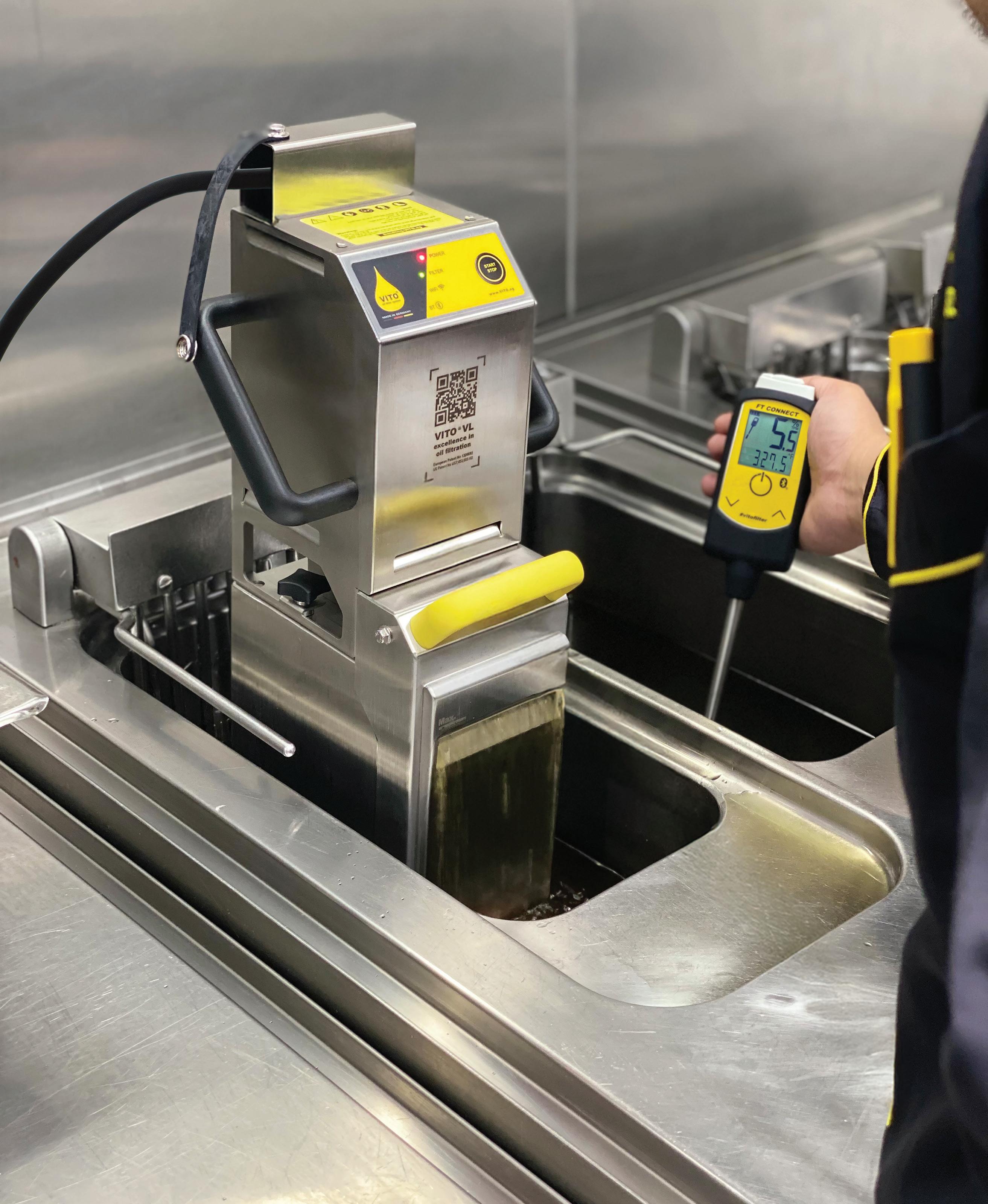


INSPIRATION AND STORIES FROM INDUSTRY
MENTIONED IN THIS SECTION POLLY’S PIES
MAI-KAI
RUBRA
LITTLE SISTER
BY NIGHT, RUBRA’S MENU TAKES ON A BOLD NEW FLAVOR—STAR FRUIT TOSTADAS WITH HEIRLOOM TOMATO-PISTACHIO SALSA, SMOKED SIERRA BEIGNETS, AND OLIVES. LARGER PLATES INCLUDE LAMB BARBACOA WITH HERBS AND PASSIONFRUIT.

BY SATYNE DONER
Daniela Soto-Innes’s new restaurant Rubra is shaped by the land, legacy, and feminine strength.
DANIELA SOTO-INNES EMBODIES the spirit of feminine strength, a legacy passed down through generations of fierce women. Her great-grandmother lived to be 106, and every Sunday, Soto-Innes grew up steeped in their ritual of honoring life through cooking, laughter, and shared stories. When Soto-Innes looks back—before the James Beard Awards, before being named The World’s Best Female Chef in 2019 by The World’s 50 Best
THE PRIMARY MEANING AND MESSAGE OF RUBRA IS TO “EMBODY” OR “INCARNATE.”
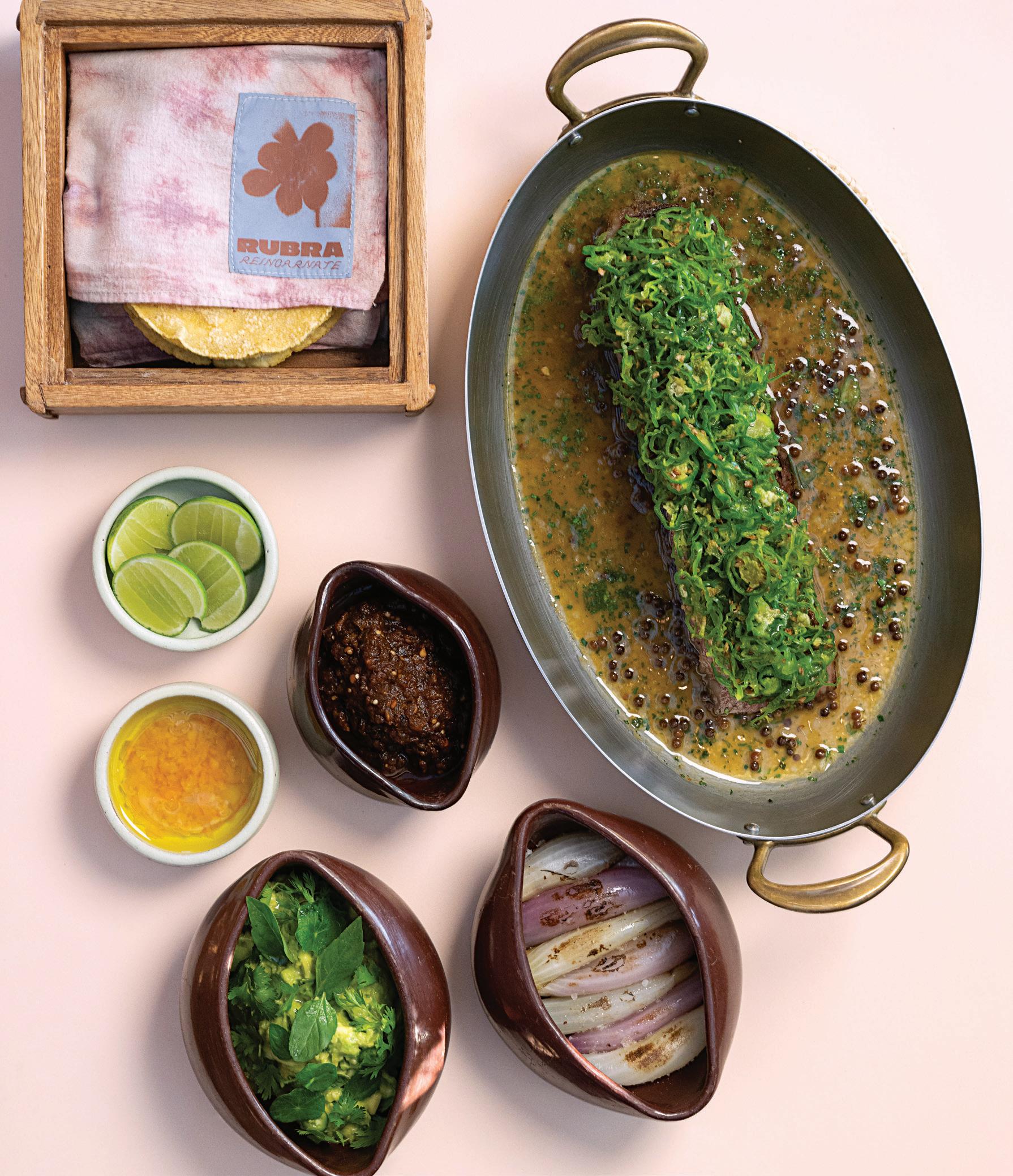
Restaurants—what she sees isn’t a straight line but a mosaic of defining moments. She spent her childhood in Mexico City, surrounded by markets bursting with color and aroma, cooking alongside her family before moving to Texas as a teenager and hustling in professional kitchens.
On a whim, she wrote a letter of admiration to chef Enrique Olvera, a bold move that earned her a spot at his two Michelin-starred restaurant Pujol in Mexico City. Her free-spirited nature and blazing energy leapt off every plate, and Olvera took notice. At just 23, he sent her to New York City as executive chef of Cosme, where she carved her niche as an audacious trendsetter for the next decade.
“New York welcomes you with a slap and then a hug,” Soto-Innes recalls. “It is one of the most inspiring cities, where the chefs you admire become your peers.
At the same time, you must hustle, because it’s hard to make it. But when you do, you’ll see the most wonderful outcome of your creative pursuits.”
Cosme catapulted her into the culinary stratosphere, showering her with accolades as she refined both craft and philosophy.
It was time to start from scratch on the Punta Mita peninsula. Soto-Innes drew inspiration from the ecosystem surrounding her—the stars in the clear night skies, watercolor sunsets, and hidden underwater caves. “I wanted the nature [of Punta Mita] to speak for itself, and the architecture to be a little bit quieter,” she says. “Everything became a constant conversation about what Rubra should feel like.”
As she embarked on a three-year, multimillion-dollar development process, the vision for Rubra began to take shape. A restaurant that doesn’t just serve food, but tells a story of place and presence. “It is a reflection of life. Of the skies here, which are so impressive. It is a space designed for you to forget about everything else while you are in the restaurant and just be present in the moment,” she says.

FAVORITE TIME OF DAY TO COOK: Nighttime
Beside the restaurant lies an expanse of tropical fruit trees and greenhouses nurturing Mexican medicinal herbs, chilis, and organic ingredients that Soto-Innes didn’t have access to in New York. The chef is often seen with her hands in the dirt, growing produce for her milpainspired menu—a nod to the traditional agricultural system of intercropping corn, beans, and squash, known as the “Three Sisters.”
DINNER PARTY DREAM GUEST: Janis Joplin
SONG THAT GETS YOU FIRED UP BEFORE A SERVICE: “Eye of the Tiger” ONE DISH THAT REPRESENTS YOU: Quesadillas
In New York, she had the winning formula— a darling of the dining scene, a chef with gravity. But the city’s gloss wasn’t enough. In 2020, Soto-Innes walked away from the Manhattan skyline for something wilder: a sun-soaked Mexican surf town where coastal jungle meets slow, languid tides.
Rubra shifts with the day: Mornings bring coffees, teas, and natural tonics like beet-ginger or passionfruit shrub. By night, the menu takes on a bold new flavor—star fruit tostadas with heirloom tomato-pistachio salsa, smoked Sierra beignets, and olives. Larger plates include lamb barbacoa with herbs and passionfruit, banana flower with galangal mojo and oregano orejón, and shrimp albóndigas crowned with zucchini blossom and coconut. For a showstopper,












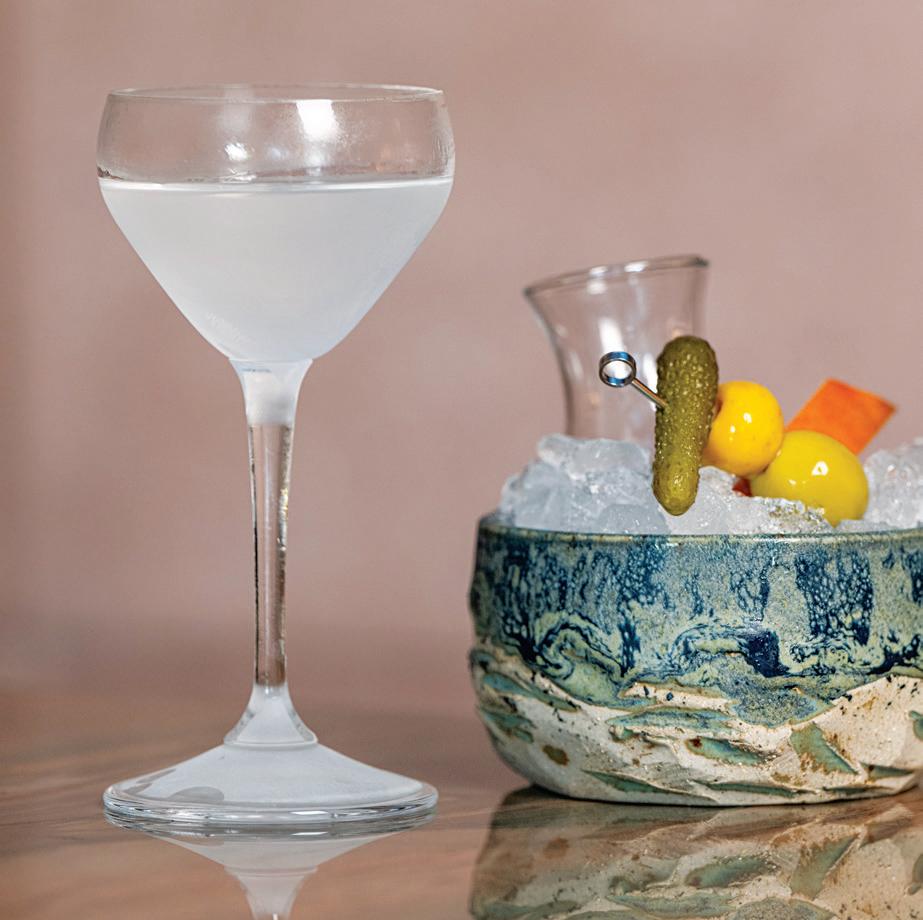
there’s Soto-Innes’s signature seafood tower: lobster, bahia shrimp, oyster clams, o-toro bluefin tuna, kiwi, pineapple, and bright sauces.
“As chefs, the hardest job is procuring the most incredible vegetables, the best quality seafood, and meats. Once you have that, your job is to follow your gut, use your personality, and don’t overthink it,” Soto-Innes says. “We’re on the Pacific, in the tropical jungle. At Rubra, we interpret that through our food in different ways, but it all comes back to the land and its abundance.”
Rubra is not only a celebration of Mexico’s organic beauty and abundance but also an ode to feminine strength. In Mexican culture, women have traditionally safeguarded culinary heritage. While
RUBRA

the name Rubra has different meanings, the primary message is to “embody” or “incarnate.” It’s also the name of a native Mexican plant with pink flowers that surrounds the area. “I wanted the space of Rubra to feel like a woman’s womb, or a cave, with soft curves and natural light. It is a space for creation and belonging,” Sotos-Innes says.
The restaurant itself was made entirely of custom rose-colored clay, derived from local shells, sand, and rock—another gesture to femininity, nature, and strength. But Soto-Innes’s appreciation for the feminine goes beyond the four walls of her restaurant and fulfills a deeper passion: creating a world-class restaurant that serves as a fertile ground for female talent in an industry that hasn’t always
been welcoming.
“The more I mature, the more I understand how important female power is for us to support each other and stay connected. But it’s also an understanding of what it feels like to work as a family, with incredible male allies in unison,” SotoInnes shares. “Most of my leadership team is women, and we want to make sure that one day the world of cooking is equal. Our ethos is one of unconditional love.”
Soto-Innes is thinking progressively; when she reflects on the next generation of female cooks, she hopes to have made a difference in inspiring the Latina community. She thinks back to her early days in New York, when there weren’t many awards or recognition for women, women of color, or young chefs. She is proud to have shattered those glass ceilings before hitting 30.
“I hope the younger generation sees me, a Mexican woman, achieving my dream, and they are inspired to go after theirs,” Soto-Innes says. “But it isn’t just me. The community as a whole is doing amazing things, and it’s the contributions of many chefs coming together and having their restaurants that represent their own culture. We’re taking a stand and saying, ‘We can do it, too.’”
At just 34, Soto-Innes has mastered the art of reinvention with the completion of her masterpiece, Rubra, which has been open for less than a year. Now and then, she thinks about what her next venture will be. She is working on another project, but it’s tightly under wraps. One thing is certain: it’s becoming less about herself and more about bringing along the next generation of chefs.
“Being able to create your own world is so empowering, and teaching those around you that they can do the same is so beautiful. I love to see people express their personalities … this is why I wake up every morning,” Soto-Innes says. “I want to awaken more creatives. You can create a whole world within the walls of a restaurant … Whether you are a 12-yearold chef or a 40-year-old chef, you don’t have to surrender yourself to a kitchen for the rest of your life. Dream bigger.”


BY SATYNE DONER
Restaurants across the U.S. are drawing on cultural roots, nostalgia, and fresh ingredients to evolve the idea of “tropical” cuisine.
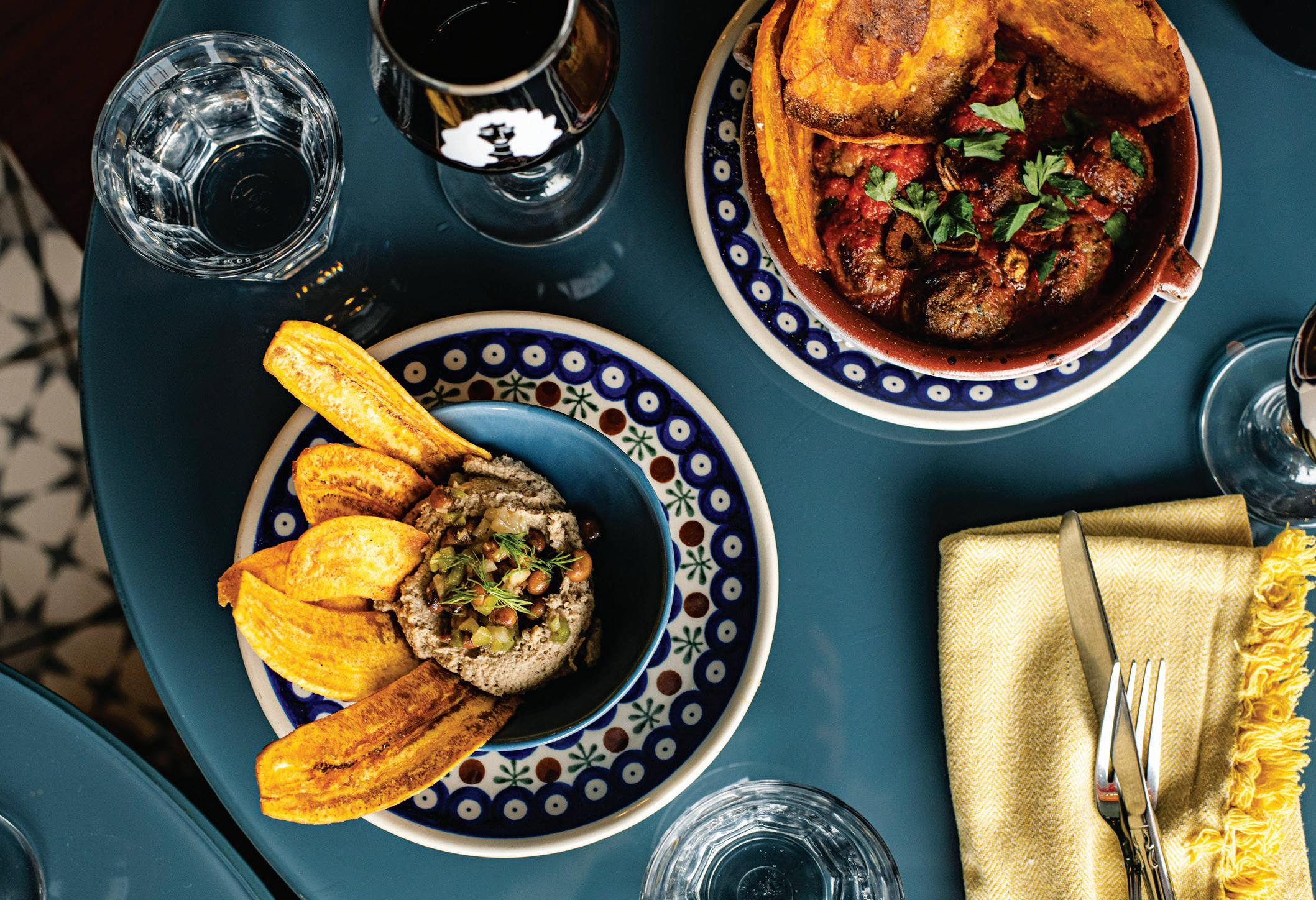
IN
DURING WORLD WAR II, American soldiers stationed in the Pacific encountered Polynesian culture for the first time, returning home with stories of idyllic island life. That fascination exploded in the 1950s with Tiki-themed bars and restaurants, giving rise to what’s now known as the “golden age of Tiki culture.”
Today, a new generation of chefs and restaurateurs are reimagining island flavors—not just as escapist fantasies, but as vessels for storytelling, memory, and cultural connection. Across the coun -
try, restaurants are putting their own spin on what it means to serve “islandinspired” food, whether that means reviving mid-century showmanship, crafting crowd-pleasing summer specials, or reclaiming culinary heritage.
In 1956, MAI-KAI opened in Fort Lauderdale, Florida, transporting guests to the South Pacific with indigenous Oceanic artifacts and décor, authentic Polynesian dance performances, and island fusion cuisine.
The menu has evolved significantly
over the decades. Now, with chef Justin Sherrer at the helm, nostalgic recipes are being reimagined with fresh, high-quality ingredients. After discovering a handwritten recipe for Cheese Tangs tucked inside an old Rolodex, Sherrer gave the appetizer a modern facelift with fresh mushrooms, fried ham, Swiss cheese, and yum yum sauce.
Sherrer’s approach emphasizes vibrant ingredients, simple techniques, and consistent, scalable recipes. He’s sourcing island flavors that go beyond




the expected passion fruit and mango— think coconut tuna ceviche, dragon fruit, and mai onions. He’s also spearheading a from-scratch sauce program, with dishes like Panang Chicken Curry made with steamed chicken, baby vegetables, fresh herbs, and scallions.
“I’m ordering daily, I’m cross-utilizing fresh ingredients like papaya and green mango salad, and we’re making sauces daily to use across the menu,” Sherrer says. “I’ve been studying ways to incorporate authentic island ingredients into a menu that can be delivered fresh and consistently.”
Some dishes are designed to complement the theatricality of MAI-KAI’s signature dinner shows. The fresh-made Lava Volcano dessert serves four: a towering cake shaped like a volcano, filled with Tahitian ice cream, covered in dark meringue, and topped with a shot glass of coconut-infused liquid nitrogen. A two-foot flame erupts from the volcano at the table.
Then there’s the MAI-KAI Suckling Pig, sourced from a local farm, salted and roasted several days in advance. Served atop a large platter of fried rice and vegetables, the pig is ceremoniously carried to the table on poles by dancers, creating a shareable, immersive experience. A seafood version featuring fresh-caught lobsters and prawns is also available.
As MAI-KAI approaches its 70th anniversary next year, the focus is on continuing to create immersive dining experiences, streamline the menu, and elevate ingredient quality.
Like MAI-KAI, Polly’s Pies—a 13-unit bakery and restaurant concept based in Southern California—is rooted in tradition and comfort food. Since the early ’90s, the brand has launched a Hawaiian-themed limited-time summer menu. According to Director of Brand Marketing Jacklyn Mitosinka, the inspiration stems from her grandfather’s time living in Kona, Hawaii.
Running from May through July, this past summer’s Aloha Menu featured more offerings than ever, including the Huli Huli Chicken Bowl, Malihini Pie and Pancakes, and the Big Kahuna BLT. Flavors leaned into tropical favorites like grilled pineapple, roasted Hawai ian macadamia nuts, sweet Hawaiian bread, and drizzles of teriyaki sauce. The Loco Moco—Polly’s take on the Hawai ian soul food staple—featured layers of herbed rice, a burger patty, and a sunnyside-up egg, all smothered in brown gravy and green onions, and served with a fresh-made banana muffin.
“It’s important to give people a sense of escape through food, and we gave our team permission to have fun and embrace the idea of being in Hawaii, whether through wearing Hawaiian shirts or serving real ingredients from the islands,” Mitosinka says. “Global inspiration needs to be on our menu year-round, and we’re always gathering guest feedback to see what they want. During this promotion, we pulled in fla vors that fit our guest model while speak ing to authentic Hawaiian ingredients.”
While the Aloha Menu was exclu

sive to summer, Polly’s Pies serves island-inspired vibes year-round with top-selling favorites like banana cream, coconut cream, and strawberry-banana (banberry) pancakes and pies.
In Providence, Rhode Island, Milena Pagán celebrates the tropical comfort foods of a childhood spent in Puerto


one equally, but I mix flavors that make sense. People can tell when something is an intrinsic element of a dish ver sus a trendy add-on. It’s not a costume. Getting people exposed to Puerto Rican food through the lens of my authentic experiences—and opening up the con versation about what it means in terms of history—tickles my brain.”



















After a day on your feet prepping and cooking and serving and managing, you’re ready for a break. With Ecolab Labor Savers, a collection of nine products designed to save you up to 4 hours a day*, you can get through the nightly sanitizing, labeling and grill cleansing faster. And that means more time for you.
Start your customized labor savings plan today!
MENTIONED IN THIS STORY THE LOBBY TIKI BAR & GRILL • MORGAN’S COVE • STRONG WATER
IMMERSIVE ESCAPSIM IS ON FULL DISPLAY AT THE JAMES BEARD AWARD-NOMINATED STRONG WATER IN ANAHEIM, CALIFORNIA, WHERE REALITY FADES THE MOMENT YOU STEP INSIDE—HELPED, IN PART, BY THE TOTAL LACK OF CELL SERVICE, BUT DRIVEN HOME BY THE RESTAURANT’S STRONG COCKTAIL PROGRAM THAT BLENDS TIKI CLASSICS WITH ORIGINAL RIFFS.
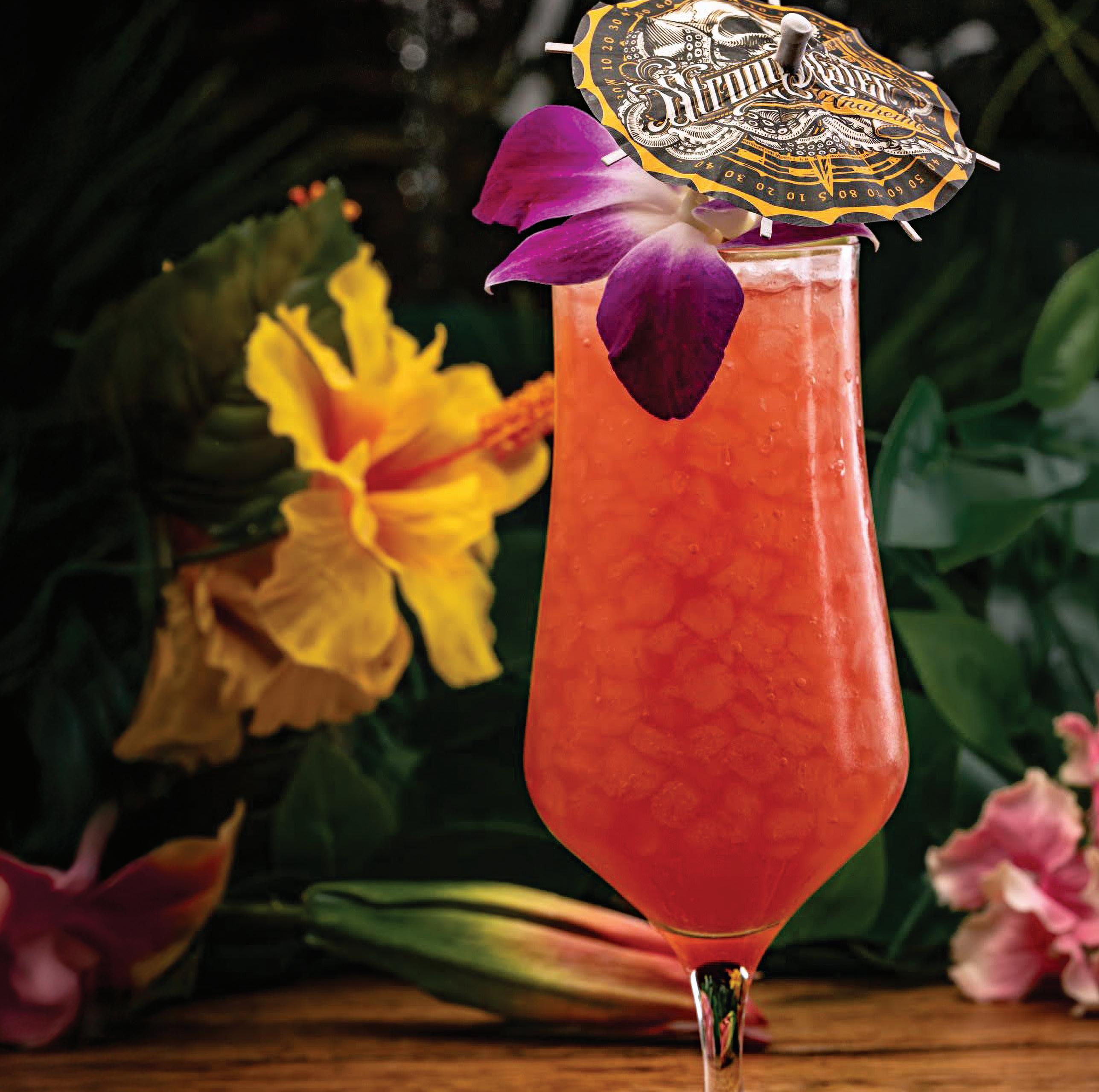
BY SAM DANLEY
A new generation of tropical cocktail bars are embracing escapism.
DONN BEACH, born Ernest Raymond Gantt, sparked the tiki bar craze when he opened Don the Beachcomber in Hollywood in 1934. Inspired by his travels in the South Seas, Beach created a tropical oasis with bamboo decor, tiki
torches, and secret rum cocktails like the Zombie and Mai Tai.
His inventive mixology and immersive design offered Americans an exotic escape during turbulent times, planting the seeds for a lasting subculture. At its
peak, Don the Beachcomber grew to 16 locations before ownership changes shrank the brand, with the last location closing in 2018.
Two years ago, 23 Restaurant Services acquired the rights to Don the Beachcomber with plans to revive the storied brand. A key part of that effort is Marie King, an internationally recognized rum and tropical cocktail expert who has worked at some of the world’s most respected tiki bars.
The revival officially kicked off in February 2024 with a new Don the Beachcomber in Madeira Beach, Florida. But after Hurricane Helene flooded the space nine months later, 23 Restaurant Services rebranded it as Tiki Docks, another of its concepts. Now the company is focused on what it sees as Don the Beachcomber’s true comeback: a flagship restaurant in Hamlin, Florida, near Disney World. This large-scale, groundup build is expected to open in 2026.
In the meantime, 23 Restaurant Services is bringing immersive, run-centric bar experiences inspired by Don the Beachcomber more quickly and cost effectively through a new “brand within a brand” concept called the Gannt Reserve Collection. These speakeasystyle bars focus on elevated cocktails
and immersive decor, with themes tailored to each location.
Last summer, downtown Tampa welcomed its first Gantt Reserve bar: Morgan’s Cove, tucked inside an existing restaurant. King describes it as leaning less into tiki and more into “nautical pirate mystical escapism” with mythical sea creatures throughout and a giant leviathan skeleton hanging from the ceiling. “You walk in and you don’t know what time of day it is, you don’t know what city you’re in,” she says. “You’re completely immersed.”
Future Gantt Reserve bars will remain rooted in the tropical cocktail tradition but won’t always be tiki. King is exploring ideas inspired by the history and culture of areas where 23 Restaurant Services already operates, such as a clipper ship-themed bar, a steampunk speakeasy, or a 1920s gangster space. The goal is to add more of these rum-centric bars across Florida while the flagship Don the Beachcomber is still in development.
“We have 30 restaurants with liquor licenses in Florida,” King says, “so any one of them could get a Gantt Reserve.”
And while the upcoming return of Don the Beachcomber may prompt talk of a tiki resurgence, she believes the con-

versation is broader. “I think it’s more of a cocktail resurgence and the need for escapism,” King says, adding that in her view, that’s what Donn Beach was truly about.
The broader tiki bar space has ebbed and flowed over the years, much like the brand that helped start it all. But in a time when there’s no shortage of reasons to unplug and drift away, a new generation of tropical cocktail bars is embracing escapism with fresh energy.
At The Lobby Tiki Bar & Grill in Oceanside, California, that escape takes the form of a retro-chic mash-up of midcentury nostalgia and modern rumfueled creativity. Opened earlier this year inside the historic Brick Hotel, The

Lobby delivers a playful dose of island fantasy. The vibe is lush and immersive with mood lighting, tropical mugs, and exotic plants. The menu offers a cheeky spin on comfort food, with dishes like Crab Rangoon Mozzarella Sticks and the showstopping Pineapple Express Tri Tip Skewers, presented inside a charred pineapple boat.
The drinks are just as theatrical, with playful names and bold presentations— like “The Jason Mamoa (Cock Punch),” a mix of rum, elderflower liqueur, pomegranate, fresh lime juice, orange bitters, and prosecco served in a giant golden rooster for two to four. “Big Ulps Eh?” is another shareable, blending rum with orange curacao, lime, orgeat, rock candy, and pineapple juice in an oversized golden pineapple. For solo sipping,





Serve unlimited, ultra-filtered still and sparkling water presented in elegant, reusable, fully recyclable glass bottles.
Is your water service meeting the same high standard as everything else you serve? With Culligan Quench’s premier line of Vero Water dispensers, you gain complete control over every flavor on the table –no more off-tasting tap water. Our advanced five-stage filtration system delivers a consistently exceptional taste in every glass. The Vero system provides a crisp, effervescent sparkling water freshly poured on-demand, without the hassle of ordering and storing single-use bottles. We also offer a variety of high-capacity filtered ice dispensers for crystal-clear, great-tasting ice.

Available for purchase or rent, with consistent, worry-free performance backed by our nationwide service network. Call us today to redefine your guest water service and make sure you ask about our first month free rental promotion.


Vero Water is served by many Michelin starred restaurants for it’s purity and elegant bottle service.
DON THE BEACHCOMBER WAS ACQUIRED TWO YEARS AGO WITH PLANS TO REVIVE THE ICONIC BRAND.

the “Temple of Doom” combines bourbon, house rum, demerara, falernum, macadamia nut, pineapple, and lemon— and it arrives on fire.
Fridays turn up the island energy even further, with hula dancers bringing live rhythm and movement to the space. The goal? To make it easy for guests to stay a little longer, order another drink, and forget what day it is.
That kind of immersive escapism is also on full display at the James Beard–nominated Strong Water in Anaheim, California, where reality fades the moment you step inside—helped, in part, by the total lack of cell service.
Co-owner Ying Chang says it wasn’t intentional but it’s become part of the charm for many guests. “Half of the time, they’re like, ‘Oh my god, that’s actually so cool,’” she says. “And half of the time, they’re like, ‘Oh my god, can I get your Wi-Fi?’”
Immersion has always been the goal for Yang and co-founder Robert Adamson. The idea started at their first concept, Blind Rabbit, where their “Mahalo Monday” events celebrating tropical rum drinks sold out within minutes.
They didn’t realize it at the time, but those early events were essentially the starting point for Strong Water’s cocktail menu. As they went deeper, Yang and Adamson began visiting other tiki bars to study the culture. That exploration opened their eyes to the depth of tiki’s history.
Still, Chang notes Strong Water wasn’t
conceived as a strictly tiki bar. When they opened, they called it a Nautical Tropical Bar and focused on fresh, modern takes rather than staples like the Mai Tai or Painkiller. Now, the menu blends originals with those classics, many marked by their origin and creator. One standout Strong Water originals is the “Tales From the Black Lagoon,” a layered mix of Jamaican black pot still rum, Spanish liqueur, pineapple, lime, banana cane, hemp orgeat, and black walnut bitters, served in a custom souvenir mug. On the classic side, options include the “Cobra’s Fang,” a 1937 Don The Beachcomber creation made with rum, falernum, lime, fassionola, orange oleo, bitters, and absinthe; and the “Jet Pilot,” a 1958 recipe featuring multiple rums, falernum, cinnamon, citrus, bitters, and absinthe.
Chang credits the tiki historians of the ‘70s and ‘80s for preserving the stories and recipes behind the drinks—a tradition she wants her staff to help preserve and pass along to guests.
“Our training program is very intense,” she says. “They have to know all this history and background of where this drink or that drink was first invented and who invented it. We want to have that conversation with our guests so we can educate them as well.”
The classics are still tweaked and updated through a modern lens to better suit today’s drinkers, though.
“If you look through some of the archives on the cocktails and you actually make them to spec, they’re rough,”
Chang says. “They can be hard to drink and maybe not necessarily fully balanced. So, I say ‘modern’ in terms of approachability. We want to make sure that we don’t completely bastardize the cocktail and that we still celebrate all those beautiful notes of the original concept of the drink.”
That commitment to storytelling extends beyond the menu. Chang and Adamson spent years curating pieces from estate sales, Goodwill, and Facebook Marketplace, handpicking every item to build a world within the bar’s walls. The vision is a shipwrecked vessel run aground, where rum-fueled travelers gather amid the wreckage. Chang likens it to Robinson Crusoe: You’ve washed ashore and found refuge in the hull.
Some seats are highly coveted, like the intimate Captain’s Quarters tucked in back. Other guests gravitate toward the Zombie King Grotto, a dramatic water feature and nod to tiki tradition. It also inspired the Zombie King cocktail—a blend of dark rums, coconut rum, pimento dram, lime, pineapple, and cinnamon, plus black walnut and Angostura bitters—and a larger fictional world; QR codes on the menu link to short films that expand the bar’s lore, adding another layer of playful escapism to the experience.
Of course, tiki bars aren’t without cultural questions. The genre’s history is complicated, often borrowing loosely from Polynesian and Pacific Island aesthetics without much thought to their origins. While some say a tiki bar must have tikis, Strong Water’s focus on shipwrecks and seafaring adventure was an intentional choice to sidestep concerns around appropriation.
For operators who do lean more heavily into traditional tiki, Chang’s advice is simple: don’t center yourself. Step back, consider other points of view, and approach with respect. “It’s really about the perspective of the consumer looking within,” she says. “You have to be mindful of what you’re bringing into your space, because you always want to make sure everyone feels comfortable and welcome.”









«BY CALLIE EVERGREEN AND SATYNE DONER
IN AN INDUSTRY WHERE THE WISDOM OF RESTAURANT veterans are revered, we also find it just as important to recognize rising talent—the younger generations who are making cultural impacts, pushing creative boundaries, and challenging toxic workplace norms to form something better in its place.
From chefs and beverage directors to COOs and social media managers, this year’s class of Rising Stars 40 under 40 come from all walks of life, yet are united in their common goal of creating the progressive future of the fullservice restaurant industry. That means more thoughtful sourcing and sustainability practices; empathy-driven leadership; and integrating people, culture, and operations to create systems where individuals can thrive.
Our story begins with a profile of a stellar example of what it means to infuse fearless flavor, creativity, and personality to an emerging brand: Mary Lou Davis, the new executive chef of Ida Claire in San Antonio, Texas. x

AGE: 35
EXECUTIVE CHEF
IDA CLAIRE
SAN ANTONIO, TEXAS
One of Mary Lou Davis’s greatest fears is becoming stagnant. That naturally means she has a relentless drive to push herself to her limits creatively, professionally, and personally—traits that have driven her journey from North Texas restaurants to behind the camera of “Hell’s Kitchen” to the Bay Area of California, and most recently, led her back to her San Antonio roots in the kitchen of Ida Claire. Davis is also no stranger to Ida Claire’s parent company FB Society, the Dallas-based restaurant group co-founded by industry veteran Jack Gibbons.
Like many in the foodservice world, Davis started out as a server at restaurants like Joe’s Crab Shack and Pappadeaux before being elevated to a kitchen manager while she was studying at University of North Texas. The purple-haired chef went on to earn another degree at The Culinary Institute of America, and by 2016, she was working as a sous chef at spots like Perry’s Steakhouse & Grille and Chart House. Those experiences, Davis says, taught her how to always ask the question, “what’s the turnover rate?”
Her journey with FB Society officially began in June 2017, when she joined Whiskey Cake as sous chef before rising through the ranks over the course of a little over four years to chef de cuisine.
When the opportunity came along to be a contestant on Season 19 of “Hell’s Kitchen: Las Vegas,” 28-year-

old Davis took the leap and ultimately placed as runner-up on the season, which premiered in January 2021. While the episodes showcased her humor, determination, ability to learn and grow quickly, and her culinary flair, the show also helped her realize she had boxed herself in—and could no longer afford to play small. “I didn’t realize I had put myself in a box until I saw all the other chefs,” she says. “I was just like, ‘Wow, you can do so many things. There are so many different cuisines, and I’d never thought of them.”
It was the catalyst for her move to California, where she spent three years working pop-ups in the Bay Area. She also took a two-month culinary tour through Thailand, Vietnam, Cambodia, Singapore, and the Philippines, where her worldview and palate both expanded dramatically.
Davis describes her time in California as pivotal, but eventually, she began to feel that familiar itch of stagnation. So when FB Society reached out about the opportunity at Ida Claire back in Texas—after several months of nudging—she felt the timing was right. “I always feel like signs come in threes,” she says. “And there were three different signs that were just telling me that I should go back home [to San Antonio].”
Since taking the culinary reins at Ida Claire earlier this year, Davis has approached the restaurant with a clear vision. Compared to Whiskey Cake, Ida Claire is “the quirky cousin. We are the red-headed stepchild. We just want to have fun and be different,” she says, which happens to fit her personality perfectly. “I’m the quirky one who likes to do silly things and have fun with my friends and go to anime concerts.”
She’s currently focused on rebuilding the kitchen’s standards and cul -
ture while working on menu innovation. Inspired by her travels and personal style, Davis is already making subtle shifts to the food identity at Ida Claire.
“I’m going back to Ida Claire’s older roots, where instead of it being Southern-Cajun inspired, we are worldly inspired, because the whole Ida Claire brand is supposed to be based on this woman. Her name was Ida, and she went around the world and she took little bits of what she found, and she put it into her cuisine. And it’s me. I feel like I’m Ida,” Davis says. “I’ve been traveling around the world, and I’m taking little pieces of what I found from these other cultures, and I’m going to start putting them into the food that I’m making.”
For now, Davis is focused on transforming Ida Claire into a reflection of her culinary journey and artistic flair as the concept grows. But one day, she hopes to open her own restaurant.
“When I worked at Whiskey Cake, I only paid attention to the kitchen and what I was doing. I didn’t even pay attention to our numbers, I just knew that I was hitting everything,” she admits. “This time, I’ve been more involved in how the actual operations of the restaurant are, so I’ve been just taking this time as a learning opportunity.”
In the meantime, she’s creating something just as compelling: a space where flavor meets fun, where guests feel seen, and where her team feels like family. And true to form, Davis has no intention of dimming her light. She represents a new generation of chefs who aren’t confined by traditional boundaries. She’s a storyteller, a cultural explorer, and an artist who happens to use food as her medium. Whether she’s cosplaying at an anime convention or rallying her team during a busy dinner service, Davis brings her full, unapologetic self to the table.



AGE: 31
ASSISTANT BEVERAGE DIRECTOR
INDIGO ROAD HOSPITALITY GROUP
CHARLOTTE, NORTH CAROLINA

Jordan Moton is ushering in a new era of beverage leadership with a blend of creativity, precision, and purpose. She supports multiple restaurant concepts across Indigo Road Hospitality Group’s portfolio with an approach that blends technical excellence and soulful hospitality. With a background in education and psychology, she leads with empathy and offers coaching for team members that builds both skill and confidence. Known for her joy, humility, and attention to detail, she is equally comfortable designing training programs as she is jumping behind the bar in the middle of service. Moton’s ability to “read the room,” teach without ego, and connect with guests on a human level has made her a standout voice in hospitality. At her core, Moton is a mentor, a leader, and a true rising star—building a beverage culture where knowledge is shared, creativity is championed, and everyone is welcomed to the table.
Sarah Diehl
AGE: 37
FOUNDER / PRINCIPAL EMPOWERED HOSPITALITY
NEW YORK CITY, NEW YORK

Sarah Diehl is reshaping the foodservice workforce through Empowered Hospitality, the HR consulting and recruiting firm she founded to bring professional HR support to independent and growing restaurant groups. Under her leadership, the company has grown to 30 full-time experts serving hundreds of clients and tens of thousands of employees nationwide over the past eight years. With roots in restaurant operations, Diehl champions workplace transformation and sustainable careers. A 2021 Tory Burch Foundation Fellow, she also serves on industry boards for the James Beard Foundation and Wellness in the Schools, helping push the industry toward a more equitable future.

Esther McIlvain
AGE: 34
VICE PRESIDENT OF MARKETING & COMMUNICATIONS
HAWKERS ASIAN STREET FOOD ORLANDO, FLORIDA

Chris Porcelli
AGE: 39 CEO
WALK-ON’S SPORTS BISTREAUX ATLANTA, GEORGIA
Chris Porcelli took the helm as CEO of Walk-On’s in 2024, just a year after joining the company as CFO. With a background in public accounting and franchise operations at Driven Brands, Porcelli brings a fresh, finance-savvy perspective to the emerging sports bar brand. Porcelli is leading Walk-On’s into its next chapter of strategic growth, expanding (with more than 80 units in 14 states) while doubling down on scratch-made Cajun food and high-energy hospitality. Known for his infectious enthusiasm and passion for people-first leadership, Porcelli is building an “unmatched” culture from the top down at the rising concept.
Under Esther McIlvain’s leadership, Hawkers has become an unforgettable guest experience, from immersive activations to viral social moments. Her expertise in PR and relationship-building has helped the brand achieve one of casual dining’s most loyal followings—more than 50 percent of dine-in sales come from fans who visit five or more times a year, without a traditional loyalty program. McIlvain’s ability to lead through rapid change has fueled the brand’s growth.

Amanda Britton
AGE: 38
BAR DIRECTOR
SPAGHETT
CHARLOTTE, NORTH CAROLINA

Manny Romano
AGE: 38
DIRECTOR OF RESTAURANT TECHNOLOGY
UNION SQUARE HOSPITALITY GROUP NEW YORK CITY, NEW YORK

Richard Anderson
AGE: 39
CULINARY DIRECTOR
OXFORD COMMONS
TAMPA, FLORIDA

John Hagen
AGE: 38
SENIOR DIRECTOR OF CULINARY AND BEVERAGE WALK-ON’S SPORTS BISTREAUX ATLANTA, GEORGIA

Hannah Atteberry
AGE: 33
PUBLIC RELATIONS MANAGER RED ROBIN ENGLEWOOD, COLORADO

Alfio Celia
AGE: 37
VP OF FOOD & BEVERAGE CRESCENT HOTELS & RESORTS FAIRFAX, VIRGINIA

Chelsea Bilbia
AGE: 28
MARKETING COORDINATOR FB SOCIETY DALLAS, TEXAS

Josh Begley
AGE: 33
CULINARY DIRECTOR OF ITALIAN CONCEPTS INDIGO ROAD HOSPITALITY GROUP CHARLESTON, SOUTH CAROLINA

Hope Carpenter
AGE: 29
TRAINING MANAGER
MEXICAN SUGAR (FB SOCIETY) DALLAS AND HOUSTON, TEXAS
AGE: 34
OWNER / EXECUTIVE CHEF
RÊVE
BIRMINGHAM, ALABAMA

For Jacob Stull, culture isn’t just a word on the wall—it’s something that the team lives by each day. He strives to break the cycle of the toxic restaurant environment; in his kitchen, there’s no shouting or ego. Just collaboration, respect, and room for creativity. He champions his team’s individual passions, offering guidance without stifling autonomy. By fostering a supportive environment, Stull proves that excellence and empathy aren’t mutually exclusive—they’re essential ingredients for a new kind of restaurant leadership.

AGE: 37
CHIEF OPERATING OFFICER / HEAD OF PEOPLE
FEAST & FETTLE
EAST PROVIDENCE, RHODE ISLAND
Kyla Hanaway-Quinlan has helped transform Feast & Fettle, growing its team from 30 to 300 employees and scaling revenue from $6 million to $50 million. Her approach goes beyond business metrics. Hanaway-Quinlan integrates people, culture, and operations to create systems where individuals and organizations thrive. Drawing on personal and professional experience, she champions programs that provide opportunities for those facing barriers such as trauma, substance use, or poverty. Her empathy-driven leadership has boosted revenue, retention, and guest acquisition while fostering a culture of growth and inclusion.

AGE: 35
VP OF PEOPLE EXPERIENCE
SPB HOSPITALITY
HOUSTON, TEXAS

AGE: 27
SOCIAL MEDIA PRODUCER & COMMUNITY MANAGER RED ROBIN ENGLEWOOD, COLORADO
Early in her career, Larissa Norwoods launched BJ’s TikTok presence, driving growth through influencer partnerships, reaching younger audiences, and creating viral content. Now at Red Robin, she manages the brand’s media ecosystem, combining creativity with measurable business results. Known for pushing boundaries and embracing innovation, Norwoods continues to expand its impact and shape the future of FSR marketing.
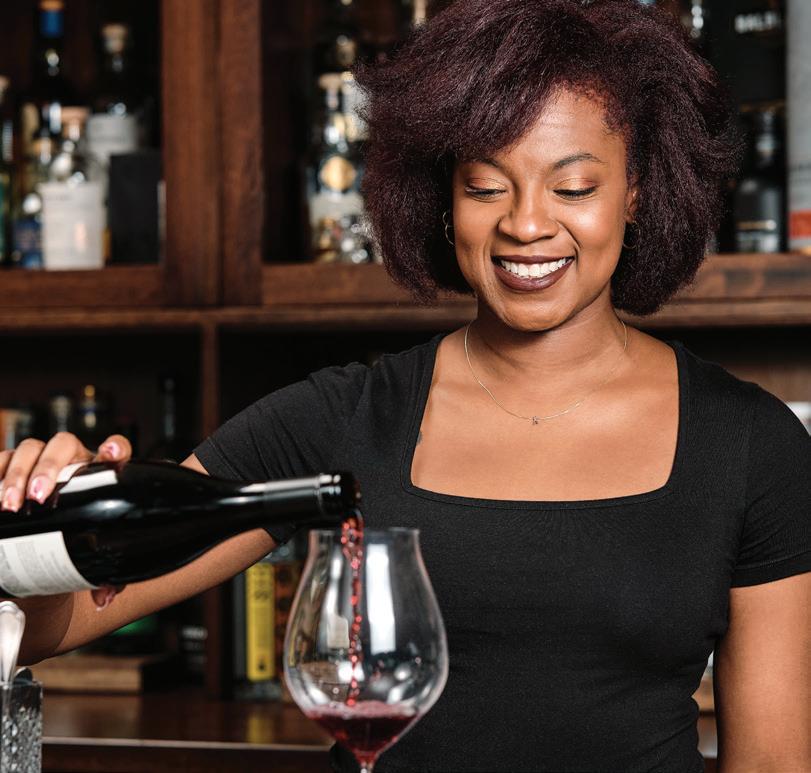
AGE: 37
SOMMELIER NÀDAIR ATLANTA

Liz Banks
AGE: 39
LEARNING AND DEVELOPMENT MANAGER
BAD DADDY’S BURGER BAR / GOOD TIMES RESTAURANT INC. GOLDEN, COLORADO

Stephanie Funderburk
AGE: 34
AREA DIRECTOR
INDIGO ROAD HOSPITALITY GROUP CHARLESTON, SOUTH CAROLINA

Samantha Strong
AGE: 34
EXECUTIVE DIRECTOR OF BRAND CALENDAR IHOP (DINE BRANDS) PASADENA, CALIFORNIA

Nick Walker
AGE: 37
CULINARY DIRECTOR
WHISKEY CAKE KITCHEN + BAR (FB SOCIETY) DALLAS, TEXAS

Emily Adams
AGE: 34
MARKETING MANAGER
DIVIDEND RESTAURANT GROUP DENVER, COLORADO

Chad Offerdahl
AGE: 32
CO-CEO THE BIG BISCUIT PRAIRIE VILLAGE, KANSAS

Mike Whatley
AGE: 37
VP, STATE AFFAIRS AND GRASSROOTS ADVOCACY
NATIONAL RESTAURANT ASSOCIATION
WASHINGTON, DC

Chase Lanier
AGE: 34
BEVERAGE MANAGER
SORRY CHARLIE’S SAVANNAH, GEORGIA

Kendall Moore
AGE: 31
EXECUTIVE CHEF
SPAGHETT
CHARLOTTE, NORTH CAROLINA
Katie Egan
AGE: 39
GENERAL MANAGER OF DOORDASH FOR BUSINESS
DOORDASH
SAN FRANCISCO, CALIFORNIA
Katie Egan’s cross-functional leadership has shaped companies from Amazon and Square to Caviar, but her biggest impact is at DoorDash, where she served as the company’s first chief of staff to the CEO and now leads as general manager of DoorDash for Business. From startups to Fortune 500 enterprises, Egan has driven innovation to meet evolving needs. Known for anticipating trends and scaling end-to-end solutions, she helps businesses transform everyday meals into meaningful moments.

Kendall Moore’s journey to the kitchen began out of necessity, when he started cooking for his family at a young age after his mom became ill. Upon her recovery, his love for cooking remained, which led him to pursue a degree in hospitality. A Charlotte native, Moore recently returned to his hometown to lead Spaghett, a craft pasta and cocktail house that opened this summer in the city’s historic Fourth Ward. He brings a thoughtful style to the table shaped by foraging, seasonality, and a deep respect for food.

Graham House
AGE: 38
EXECUTIVE CHEF
LUMINOSA
ASHEVILLE, NORTH CAROLINA
A proud Western North Carolina native, chef Graham House blends Italian traditions with his home region at Luminosa, featuring dishes that feel both rooted and revelatory. His food reflects a decade spent shaping Asheville’s culinary voice, building deep relationships with local farmers, and mentoring the next generation. After Hurricane Helene, he fed displaced neighbors and organized chef-led relief efforts—an example of a rising star recognized not just for talent alone, but for impact, values, and grounded leadership. By building thoughtful systems and empowering his team, he ensures that excellence and innovation go hand in hand.
AGE: 36
CHEF/OWNER
DUCK SEL
CHICAGO, ILLINOIS

Donald Young launched Duck Sel as a response to the struggling post-pandemic hospitality industry, which has evolved and grown into “the city’s best dinner party.” The intimate, ticketed pop-up dining experience features an array of dishes inspired from Young’s Midwestern upbringing. True to his name, Young began his culinary career at age 17 and was one of the youngest chefs to be awarded a Michelin star in the U.S. at the age of 28 for his work at Temporis in Chicago. His exemplary talent, creativity, and strong tenacity to advance in a highly competitive field cements his place as one to watch.

AGE: 33
DIRECTOR OF CULTURE
INDIGO ROAD HOSPITALITY GROUP
CHARLESTON, SOUTH CAROLINA

AGE: 39
DIRECTOR OF OFF-PREMISE BUSINESS DEVELOPMENT SUNNY STREET CAFÉ COLUMBUS, OHIO

AGE: 39
COFOUNDER / CEO
SNEAKY SPIRITS BEVERAGE GROUP ATLANTA, GEORGIA

AGE: 33
VP, CULINARY AND CONCEPT DEVELOPMENT
THE GREENE TURTLE BALTIMORE, MARYLAND

AGE: 30
DIRECTOR OF MARKETING BROKEN YOLK CAFÉ SAN DIEGO, CALIFORNIA

AGE: 33
NATIONAL BEVERAGE MANAGER PARADIES LAGARDÈRE ATLANTA

AGE: 33
EXECUTIVE CHEF
URBAN FARMER
DENVER, COLORADO

AGE: 28
EXECUTIVE CHEF
O-KU RALEIGH (INDIGO ROAD HOSPITALITY GROUP)
RALEIGH, NORTH CAROLINA

AGE: 33
EXECUTIVE SOUS CHEF
HOTEL VAN ZANDT
AUSTIN, TEXAS

BY DREW FILIPSKI

How operators are rethinking meat to meet demand.
Whether it’s labor shortages, rising costs, or shifting dayparts, full-service restaurant kitchens in 2025 are operating in survival mode. As operators look to protect margins and streamline prep, protein sourcing is getting a second look. And for many, the value lies in receiving consistent, high-quality cuts.


“If an operator is bringing in larger primal cuts of meat, they need skilled labor to properly cut, trim, portion, and cook those proteins. These days, that skilled labor is becoming increasingly difficult to find,” says Chef Brooks Cameron, corporate executive chef at Tyson Foodservice
According to a 2024 survey by Restaurant Business, 75 percent of opera-
tors expect to have back-of-house positions to fill in the coming year, and chefs already make up 30 percent of all open foodservice jobs, according to a 2024 Expert Market report. On top of these concerns, the pressure to offer more versatile, high-quality menus isn’t letting up. That convergence is changing what chefs are looking for in raw protein, and








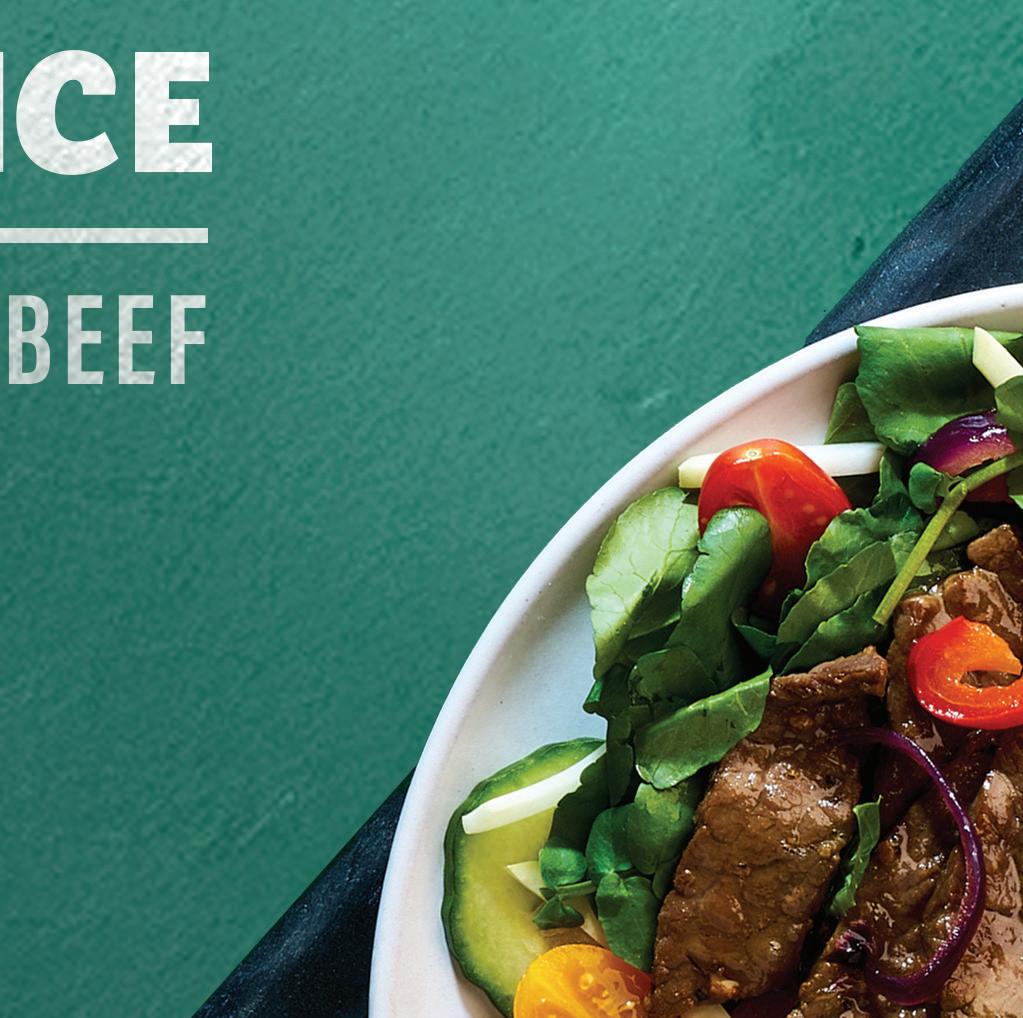
ibp Trusted Excellence® brand proudly serves foodservice, providing chefs and operators with expertly prepared beef cuts that perform on menus—in recipes like the Vietnamese Shaking Beef Salad From our signature box to your elevated plates, this brand stands for craft, consistency and service.

LEARN MORE ABOUT OUR SOLUTIONS
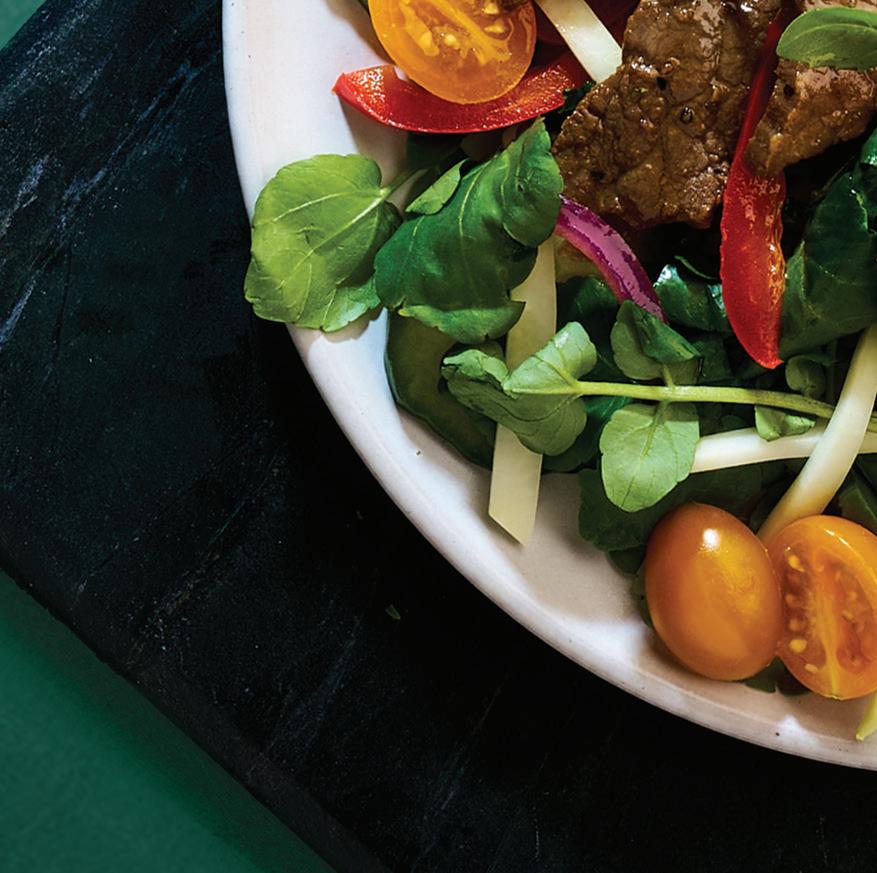







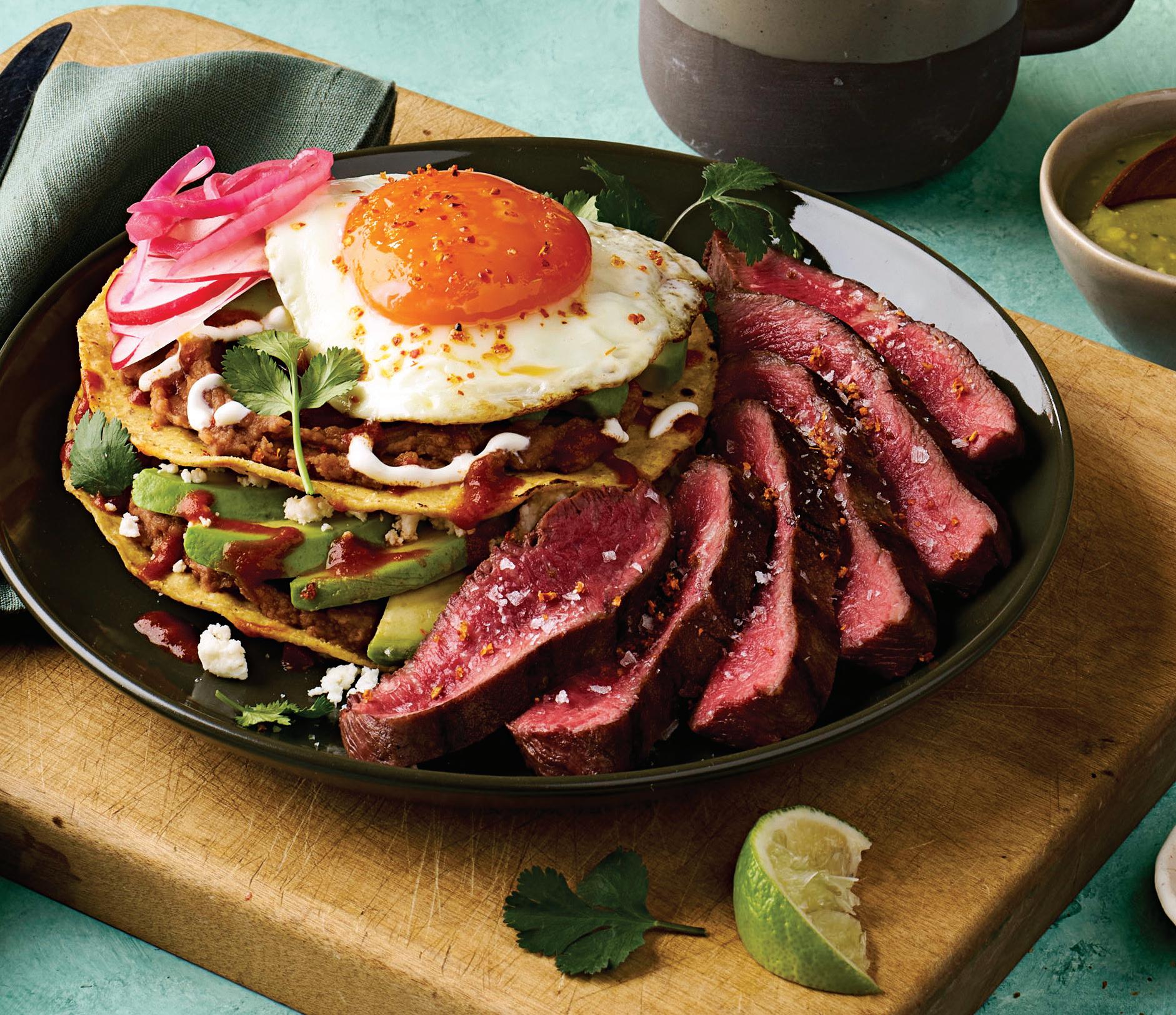
how suppliers are expected to deliver it.
“If you don’t have someone who can break down and portion proteins properly, it can impact everything from yield and plate cost to guest experience,” Cameron says.
Restaurants are increasingly opting for value-added options—deboned, portioned, pre-trimmed and/or Frenched cuts—that help ease the burden on kitchen labor. Packaging matters too, as individually wrapped raw pork and beef portions can help reduce waste during slower or fluctuating shifts.
The ibp Trusted Excellence® brand helps operators cut back-of-house labor and waste by offering a wide range of expertly trimmed raw beef and pork cuts. Every cut is backed by internal FSQA teams, USDA grading, and tight product specifications to ensure dependable consistency, muscle sizing, and yields— box after box, case after case.
These offerings include labor-saving, value-added formats such as subprimals, portioned pieces, and pre-trimmed cuts. Trim levels—whether ½ inch, ¼ inch or fully trimmed—are critical to controlling food costs and labor, and with food waste costing restaurants up to $2.6 tril-
plated dishes seen by customers affects the guest experience. “We eat with our eyes, so quality is very important when the protein is the star of the show or center of the plate,” Cameron says. “Suppliers who consistently meet expectations makes back-of-house prep and cooking easier to manage. Customers expect consistency in quality between visits.”
While customers and operators demand consistency, operators rely on versatile ingredients to keep operations flexible and cost-effective. According to Datassential’s 2025 menu penetration report, pork is featured on 90.5 percent of menus and beef on 90.9 percent, making both appealing options for comfort, creativity, and versatility. “We’re seeing pulled pork sandwiches at brunch, beef barbacoa in breakfast burritos, and steak-topped salads for lunch. The key is having a product that’s flexible enough to support that kind of creativity,” Cameron says.

lion globally each year, according to The Restaurant HQ, 2024, these formats are vital.
“Chefs and staff can expect a consistent quality product with trimmed value-added options that help with backof-house efficiencies,” Cameron says. Back-of-house space is tight, and additional equipment or prep surfaces aren’t feasible for many operations. This can make trimming and portioning difficult, leading to potential food safety issues and inconsistencies in cuts. Reducing the visual appeal of
The need to use versatile proteins, like beef and pork, across multiple dayparts and menu applications, is changing how operators think about protein sourcing. “Where am I going to use this on the menu? If it’s a center-of-plate protein that needs to stand alone, then quality and consistency are really important,” Cameron says. “If it’s an ingredient in another dish, then I’m less concerned about whether it is prime.”
Cameron recommends exploring underutilized cuts: “Operators need to look at other cuts they could be using to drive costs down, like beef shoulder clod or pork collar steaks and ham muscles.” In a climate defined by margin pressure and operational strain, sourcing smarter protein is a necessity. With consistent trim-level precision and resources to stretch labor and product further, ibp Trusted Excellence® brand helps restaurants meet the moment without compromising.









ibp Trusted Excellence® brand proudly serves foodservice, providing chefs and operators with expertly prepared pork cuts that perform on menus—in recipes like the BBQ Pork Ramen. From our signature box to your elevated plates, this brand stands for craft, consistency and service.











• Lower-end cuts of meat are increasing in popularity with preparations like Birria.
• Beef and pork remain staples across U.S. menus, competing more with chicken now.
• Beef and pork have similar menu penetration rates at 90.9 and 90.5 percent, respectively.
• Birria leads all dishes with the highest four-year growth, increasing by 450 percent.
• Chicken dominates among protein varieties, appearing on 95.5 percent of U.S. menus.
• Many consumers and operators alike are looking for more budget-friendly beef and pork options that maintain high quality.
CHICKEN Versatile bird that is a popular staple protein all around the world.
*On 95.5% of menus
MENU EXAMPLE:
Southwest Chicken Sandwich: Grilled, jalapeno aioli, arugula, tomato, onion, jack cheese, fresh fries.
131 Main // ASHEVILLE, NC


*On 3.2% of menus
MENU EXAMPLE:
Birria Burrito: Birria, flour tortilla, lettuce, mixed cheese, and tomatoes with salsa verde.
Tacos El Diablo // FORT COLLINS, CO









ibp Trusted Excellence® brand proudly serves foodservice, providing chefs and operators with expertly prepared beef and pork cuts that perform on menus. From our signature box to your elevated plates, this brand stands for craft, consistency and service.


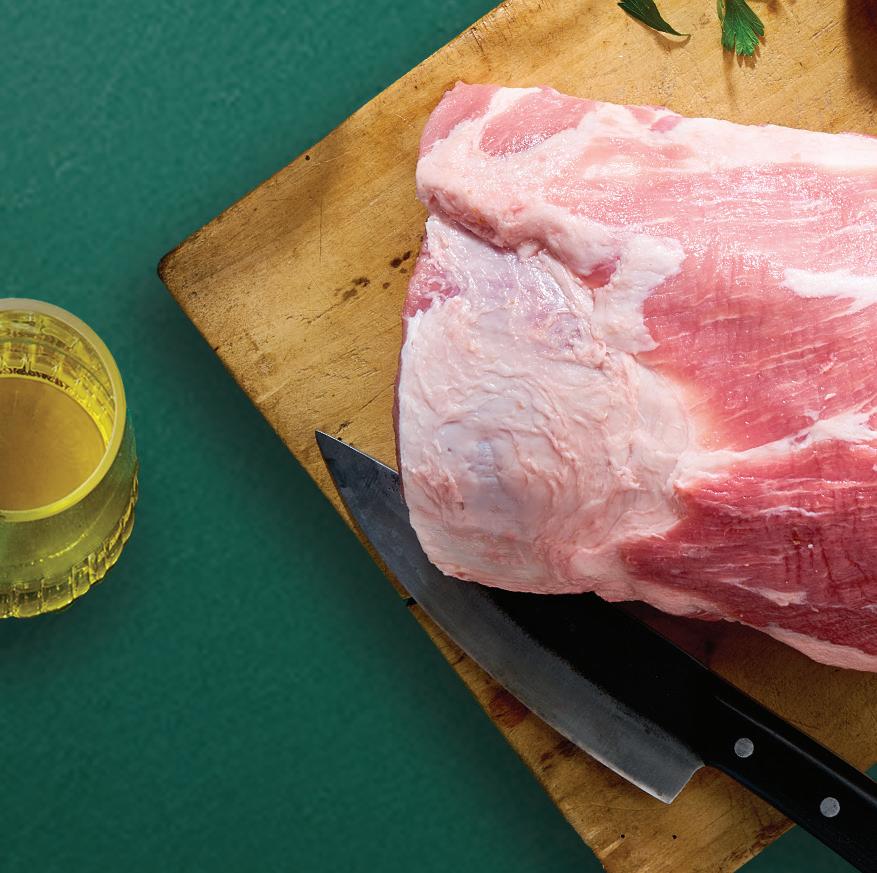







PORK Any meat or meat byproduct from a pig.
* On 90.5% of menus
MENU EXAMPLE:
Ja Jiang: Pork strips in sweet sauce and mushrooms.
Maxi’s Noodle // FLUSHING, NY


INCEPTION Trends start here. Found in mostly fine-dining and ethnic independents, inception-stage trends exemplify originality in flavor, preparation, and presentation.
1. Beef Shank
2. Bone-In Frenched Cuts
ADOPTION Found at fast-casual and casual independent restaurants, adoption-stage trends grow their base via lower price points and simpler prep methods. Still differentiated, these trends often feature premium and generally authentic ingredients.
1. Pork Belly


PROLIFERATION Proliferation-stage trends show up at casual and quick-service restaurants. They are adjusted for mainstream appeal. Often combined with popular applications (burgers, pastas, etc.), these trends have become familiar to many.
1. Shredded Beef
2. Chicken Thigh
4. UBIQUITY Ubiquity-stage trends are found everywhere—these trends have reached maturity and can be found across all sectors of the food industry. Though often diluted by this point, their inception-stage roots are still recognizable.
SATYNE DONER
From downtown kitchens to high-profile events, Deborah Miller has shaped New York City’s culinary heartbeat.
THIS WAS LIFE ON VARICK STREET in the ’90s—Lower Manhattan’s former printing district, now a rising media hub. Deborah Miller was pregnant with her youngest son, working nights at her family’s nightclub, and dreaming of something entirely her own: a cozy takeout spot next door, where she could serve fresh, homemade food on a daily rotating menu.
In 1995, that dream became a reality. She opened a downtown café, lovingly described as a “greasy spoon”—serving meatloaf sandwiches, soups, and salads. At the time, the idea of a from-scratch, ever-changing breakfast and lunch menu was far from common. But Miller had a vision, and she stuck to it.
“In hindsight, it was a crazy concept from a food cost perspective, but food is my passion. I wanted everyone else to love it the same way I do,” she recalls. “I had a fairly large and young family, and it was perfect for me. I had these four young boys at home, and I could run the café that I love and still be their mom. At the time, I wasn’t thinking of anything bigger.”
After a slam-dunk article in The New York Times dubbed her “The Matriarch of Varick Street,” word got out, and bigger clients started rolling in. Regulars began asking Miller for sandwich platters and event catering, including one customer, Lauren McGeough, who would even -

tually become her business partner and help transform the humble café into a full-blown catering empire. Suddenly, the business was evolving beyond its four walls. Demand grew for social gatherings, weddings, bar mitzvahs, and corporate events—and Miller was outgrowing her tiny, 400-square-foot kitchen. She acquired a 1,500-squarefoot space downtown, which became the home base for catering operations while still dishing out fresh, homemade meals from the original café next door.

But growth wasn’t always linear. When Hurricane Sandy hit in 2012, it flooded the downtown kitchen, forcing yet another move. Miller relocated her team to a 5,000-square-foot facility in Two Bridges, just east of Chinatown. What could have been a setback became an opportunity for reinvention. She was growing differently—but she
wasn’t afraid. In fact, she was energized. “New York is cutthroat, for everybody. But I love this city, and I grew up in this industry. My dad would wake up at 4 in the morning, so I understood the challenges going into it,” Miller says. “I’m incredibly driven and passionate. I knew being an entrepreneur isn’t for the faint of heart … there are no guarantees, and you’re going to fail a lot before you succeed. But feeding people makes me happy, and that gives me a lot of joy.”
Today, Miller’s catering enterprise remains boutique, woman-owned, and rooted in a deeply personal ethos. Her kitchen runs on a sustainable, root-tostem philosophy: herbs and produce are planted on-site, bars are stocked with locally sourced spirits, and dairy and meat products are sourced ethically

and in collaboration with local farmers. Nothing goes to waste—not even kale stems, which are turned into housemade kimchi. She experiments by finding new ways to utilize every ingredient in her pantry through sauces, pastas, or soups.
“It’s difficult for a mid-sized catering company in the middle of New York City to sustain a farm-to-fork or root-tostem business, but it’s exciting to come up with new ways to achieve it. So we learn and grow together,” Miller says. “I love learning about it, understanding the science of it, the creativity side of it. Sustainability is difficult, but I surround myself with people who believe in the same vision as I do.”
Miller is also deeply committed to fostering a culture of diversity, equity, and inclusion in her kitchens. She celebrates what makes her employees unique, and believes the culinary world—and her company—are stronger for it. In many ways, her staff reflects the spirit of New York itself: vibrant, diverse, and full of possibility.
As Deborah Miller Catering & Events approaches 30 years in business, one thing hasn’t changed: an old company slogan still rings true—“Big City Home -

made.” Miller has been in hospitality for as long as she’s been a New Yorker, and the two identities have shaped each other.
“We’re a big city, but we’re so connected to each other it doesn’t feel like it. The farmers markets here are incredible, and from the fancier restaurants to the family-owned restaurants in Queens, there’s so much you can get from the city,” Miller says. “This mix and match of flavors and experiences in one city creates so much passion and energy.”
She’s deeply rooted in the community she’s cultivated—her employees, clients, vendors, and neighbors. From serving meatloaf sandwiches out of her greasy spoon diner to executing a 1,200-person, five-floor event with multiple bars and food stations, her goal has always been the same: to help New Yorkers celebrate their most meaningful moments.
It’s all grounded in what she calls the RADISH: Relationships, Appetite, Details, Innovation, Service, and Honesty. “Creating a sense of community and family is so important to me. For me, legacy looks like connection, and I hope it includes the lives I’ve touched, the people I’ve mentored, the clients I’ve

worked with, and the relationships I’ve built,” Miller says.
Her advice to up-and-coming entrepreneurs, especially women looking to make an impact through food, is simple: be fearless. Take a deep breath and think before you speak. And don’t get distracted by money.
“Success is doing what you love, doing it well, and sharing that with your larger community. The financial achievements will come in time; I don’t really think in terms of financial success or failure. True success, for me, looks like pulling off a delicious menu, sustainably and affordably for the customer,” Miller says. “Don’t be afraid to dream bigger.”

Boasting an AUV of over $2 million, Fat Patty’s has big plans to expand on the East Coast.
WHEN FAT PATTY’S first opened in 2007 in Huntington, West Virginia, it was designed to cater to the appetites of hungry Marshall University (mu) students. The original location sits right across the street from MU’s stadium, positioned perfectly for throngs of football fans to fuel up before or after the match. “It was an instant hit, people loved it,” says Sean Oatney, chief development officer of the neighborhood burger bar concept.

Once the brand became staple-status, another unit opened in 2011, followed by a third in 2013. ARC Group purchased Fat Patty’s from original founder Clint Artrip in 2017 for $12.3 million. Fat Patty’s was corporately run until 2022, when a franchisee group purchased all five locations.
With a “quarter of a century of franchising experience,” says Oatney, he focuses on franchise development, growth, and sales. Boasting an AUV of more than $2 million across its five legacy stores (according to 2023 franchisee performance in the December 2024 Franchise Disclosure Document), it seems franchising was the wise growth path forward for Fat Patty’s.
Oatney opened his own signage and graphics business in 1996, and continued to work at other brands in both advertising and franchising until he

FOUNDER: Clint Artrip
CUISINE: American Comfort
UNITS: 6
FOUNDED: 2007
joined ARC Group in the fall of 2024, which currently oversees Fat Patty’s, Tilted Kilt, and Dick’s Wings and Grill. “I think [opening that company] gave me a great connection to franchisees because I’ve actually run my own business, and gone through all the struggles and stuff,” he says.
Traditionally, ARC Group was an operator for its three house brands, but did not sell franchises. Oatney was brought on to connect with the small team and drive franchise sales. So far, Fat Patty’s has two stores opening this year with about 10 more on the horizon.
The brand’s five legacy stores are nestled within the eastern Kentucky and southern West Virginia corridor. These
locations are all about a 45-minute drive from one another, which has helped to broaden the Fat Patty’s namesake amidst the more rural communities in which it serves.
In August, a new northern New Jersey-based franchisee opened the Eastern-most Fat Patty’s store, right on the Atlantic Ocean in Toms River. “They were actually an existing franchisee of Dick’s Wings and Grill, and they believed so much in Fat Patty’s that they actually sold their Dick’s in Georgia and went all in the Toms River location,” says Oatney.
“In the beginning of the brand, there was a focus on being within the small demographics of the Kentucky and West Virginia markets. Our focus now is kind of the opposite of that,” says Oat-

ney. The other location slated to open soon is in West Allis, Wisconsin, a suburb of Milwaukee. In comparison to the legacy stores, this unit will exist in a space with a larger demographic, higher median incomes, and a higher-density population.
As the brand expands, he says that Fat Patty’s will be utilizing a hub-andspoke model for future markets, with locations built near a central store. “We are already looking at Cherry Hill and other areas in New Jersey, Pennsylvania, and then over in Wisconsin as well,” Oatney says. “For the other locations, we’re in talks right now to do a three-unit deal in Northern Kentucky and another to do a three-unit deal in Tampa.”
Additionally, the brand is making deals near Lake Ontario in upstate New York, and Columbus, Ohio. Fat Patty’s is also actively searching for franchise operators within North Carolina, specifically in Charlotte and Durham/Raleigh.
“I think that most people are excited about the brand,” Oatney says. “They’ve never had the food, so it’s more of what’s presented on our website and then having a menu that not only is robust when you talk about our burgers, with 18 different signature burgers and then our monthly ‘Fat’s Feature’ burger, but then having something that is fresh and inno -

vative that keeps our guests coming back.”
Fat Patty’s menu includes hot appetizers like fried green tomatoes and potato skin boats to start guests off before the massive ½ lb burger hits the table. The famous burger menu ranges from a fried pickle and bacon-topped option to a gooey bourbon bacon jam and beer-cheese burger to the Cowboy Patty with shaved sirloin and sautéed mushrooms. The brand also offers wings, chicken tenders, soups, salads, pizzas, and non-burger sandwiches (including a French Dip and a Philly Cheesesteak), while an annual menu refresh changes up the options and adds in tasty new flavor combinations.
When operating a hub-and-spoke model, opening a single unit in a nonestablished region can pose challenges for any brand. For Fat Patty’s, Oatney gives credit to the marketing team. In recent months, the third highest-ranked Google search related to the brand was, “When is Toms River opening?”
Oatney also notes Fat Patty’s has found success in converting secondgeneration spaces. “You now have a great opportunity to save hundreds of thousands of dollars for that investor, because you already have refrigeration, grease traps, hoods, ventilation, and it would cost a lot to build that all
FAT PATTY’S WILL UTILIZE A HUBAND-SPOKE MODEL FOR FUTURE MARKETS, WITH LOCATIONS BUILT NEAR A CENTRAL STORE. SO FAR, FAT PATTY’S HAS TWO STORES OPENING THIS YEAR WITH ABOUT 10 MORE ON THE HORIZON.
from scratch,” he says. For example, the Toms River unit used to house a Mellow Mushroom pizzeria. While pizza is on the menu in the legacy stores, the leftover pizza ovens from Mellow Mushroom allowed the brand to add 12 different New York-style pizzas to the menu.
The Fat Patty’s culinary team adds regional items to the menu based on each specific location. Other highlights for Toms River are the mahi-mahi burger and surf-and-turf burger. “As we open up locations, we’ll probably have a Wisconsin cheese curd burger,” he says. “Then those will show up as LTOs at other locations.” Franchisees also help curate and choose the “Fat’s Features LTOs.”
Another selling point for the brand is its “cheeky and fun atmosphere,” Oatney says. Servers wear shirts with slogans like, “Nice buns, hun!” and “Our meats bring the heat!” Each location also has a section called The Yard with soft-tip darts, high-top tables, sand shuffleboard, and digital golf. The Yard was introduced in the fifth location of Morehead, Kentucky, where the Yard is called ‘the Eagle’s Nest’ for the Morehead State University Eagles. He also says that the Toms River location will have a “dartboard alley,” AKA a lineup of digital dartboards.
“We wanted to be a place that not only was family-friendly, but community-centric, so that people could come in from all walks of life, whether you’re coming in after church to get a burger and salad, to someone that’s going out to have a date night with cocktails and darts,” Oatney says. “We’ve got tons of TVs, but we’re not a sports bar. We’re just a place where we want people to hang out, and we live on the quality of the food. I think our chef-inspired profiles and the taste and the flavor of the burgers, there’s nothing like it.”
Boursin
handhelds.boursin.com
Culligan Quench
844-328-1213 | Culliganquench.com/FSR
Ecolab
800-352-5326 | ecolab.com/LaborSavers
Frank’s Red Hot
800-322-7742 | McCormickForChefs.com/Franks
Ghirardelli
888-402-6262 | ghirardelli.com/professional
Idaho Potato Commission
208-334-2350 | idahopotato.com
McCain Foods Sure Crisp
800-938-7799 | SureCrisp.com
Meat & Livestock Australia
foodservice.aussiebeefandlamb.com
Progressive Commercial
888-806-9598 | ProgressiveCommercial.com
Red Gold
866-729-7187 | RedGoldFoodservice.com
Robot Coupe
800-824-1646 | robot-coupe.com
Ruggiero
ruggieroseafood.com
Stratas
888-404-1004 | stratasfoods.com
Texas Pete
TexasPeteFoodservice.com
Tyson Foodservice
tysonfoodservice.com/products/brands/ibp-brand
Vito Fryfilter
887-859-0398 | vitofryfilter.com
Eugene Drezner
VP, BUSINESS DEVELOPMENT edrezner@wtwhmedia.com | (919) 945-0705
Amber Dobsovic
NATIONAL SALES DIRECTOR adobsovic@wtwhmedia.com | (757) 637-8673
Edward Richards
NATIONAL SALES DIRECTOR erichards@wtwhmedia.com | (216) 956-6636
Tom Boyles
NATIONAL SALES MANAGER tboyles@wtwhmedia.com | (662) 607-5249
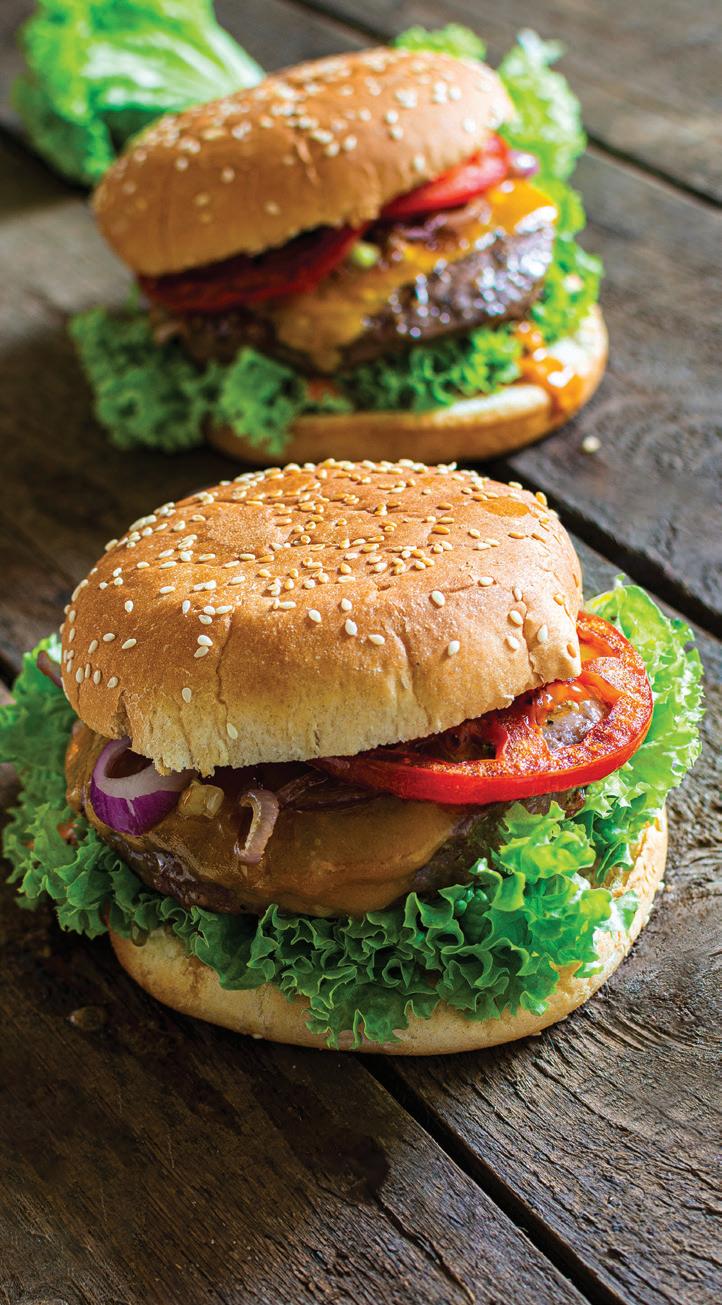


CHAD OFFERDAHL
ROLE: Co-CEO & President
BRAND: The Big Biscuit
LOCATIONS: 29
FOUNDED: 2000
HQ: Prairie Village, Kansas
In the uber-competitive breakfast space, The Big Biscuit stands out for its speed, simplicity, and steadfast commitment to quality. Under Chad Offerdahl’s leadership, the NextGen Casual concept has scaled with purpose, maintaining tight systems and a culture rooted in consistency and speed, with average wait times of six minutes and table turns of 35 minutes. In an exclusive Q&A with FSR, Offerdahl shares how data, discipline, and a people-first approach are fueling The Big Biscuit’s next chapter.
BY CALLIE EVERGREEN



What first drew you to The Big Biscuit?
My dad and I first experienced The Big Biscuit as guests at the original location in Independence, Missouri, and we immediately felt the brand’s warmth. The food, the people, and the energy just clicked and resonated with us. We saw the potential to grow something special without losing the heart of what made it great.
How has your operating model evolved?
Speed-to-table is one of our biggest differentiators. Guests are often surprised at how quickly a full, made-to-order breakfast arrives, and that speed builds trust and long-term satisfaction. Over time, we’ve refined our kitchen workflows, upgraded our systems, and trained our teams to move with fast-casual precision while delivering full-service hospitality.
How has your approach to leadership shifted as you’ve grown?
Early on, I was in the trenches, working shifts and solving problems myself. But as we grew, I had to evolve from operator to builder. Now,
I focus on empowering others, building strong teams, and setting people up to succeed. Leadership is about trust, clarity, and consistency.
How do you use data to improve operations?
We track everything from KPIs to labor forecasting, so our teams can make smart, realtime decisions. Our managers have full visibility, which keeps everyone aligned and accountable. On the training side, we use digital platforms to onboard faster, update procedures in real time, and maintain consistent execution. It all adds up to a more reliable guest experience and helps us identify opportunities we might otherwise miss.
What are you most proud of in your journey so far?
I’m proud of coming into this brand as an outsider, earning trust, and helping grow it into something bigger without losing its soul. When I joined, there were just two original locations, and the founder had no plans to expand. Today, we’ve built a franchise system that’s attracting incredible operators.


Cicis stays relevant with new growth, nostalgic favorites, and a modern franchise model.

CICIS PIZZA, THE ORIGINAL ALLYOUCANEAT PIZZA BUFFET, turns 40 this year—and the milestone comes as the brand continues to evolve, modernize, and expand. Founded in 1985 in Plano, Texas, Cicis has grown into a category-defining concept, known for its family-friendly energy, craveable buffet experience, and accessible price point. Four decades later, that same winning formula continues to fuel national expansion as the brand appeals to a new generation of operators and guests.
Underpinning Cicis’ renewed momentum is a laser focus on quality and affordability. Cicis’ long-standing promise of TBPVA™ (The Best Pizza Value Anywhere) is more powerful than ever in a market where inflation has pushed dining costs to historic highs. National promotions have reignited buzz and boosted systemwide traffic, including a $5.99 buffet and a new $9.99 Mix & Match Combo, showing how the brand knows how to make noise and move the needle.
One of the most anticipated moments of the milestone year came with the return of Cicis’ beloved Original Chocolate Dessert. Back by overwhelming demand, the cult-favorite menu item tapped into nostalgia
To learn more about franchising with Cicis Pizza, visit



FRANCHISE WITH A 40-YEAR LEGACY
ENDLESS PIZZA. ENDLESS OPPORTUNITIES.



Fuzzy’s Taco shop’s distinctive concept and approach is fueling expansion opportunities nationwide.
standing out is no easy feat. Beyond a quick bite, guests are more intrigued to seek out memorable dining experiences that combine great food, a vibrant atmosphere, and a brand they can connect with. For Fuzzy’s Taco Shop, these elements have always been at the core of its differentiation. From the brand’s fresh flavors to its relaxed, fun-loving vibe, Fuzzy’s continues to carve out a unique space in the fast-casual market. The brand’s nationwide expansion highlights its strong franchise system and has demonstrated significant investment potential for growing franchisee groups.
Guests aren’t just visiting their local Fuzzy’s for ordinary tacos, they’re coming for dishes that deliver a punch of flavor with every bite. This dedication to menu innovation sets the brand apart from competitors as its restaurants offer unique items that keep guests engaged and attract newcomers.
Fuzzy’s bar program also plays a huge role in the brand’s appeal. With its famous margaritas, Fuzzy’s creates a destination that’s perfect for any occasion, from casual lunches to happy hours and late-night gatherings. It’s this ability to combine high-quality food with an inviting atmosphere that has helped Fuzzy’s strike the right balance between fast-casual convenience and a memorable dining experience.

• Franchising since 2003
• 98%
Franchisee Owned
• 117 Operating Units
Fuzzy’s unique brand culture and fun, laid-back vibe is what distinguishes the brand from other dining experiences. With its colorful and locally inspired décor, Fuzzy’s creates an experience that feels casual, exciting, and full of personality. For guests, Fuzzy’s is more than a meal, it’s a destination to gather and enjoy quality time rather than settling for a quick bite. This atmosphere resonates deeply with a wide range of demographics who value dining experiences that reflect their lifestyle.
Fuzzy’s differentiated concept is not only good for guests, but it’s great for business. The brands’ flexible restaurant formats allow franchisees to capitalize on opportunities in urban, suburban, and nontraditional spaces alike. With the brand’s focus on operational simplicity and strong
support systems, franchisees are equipped with the tools and resources to navigate an increasingly competitive market. Brian Bogert, a franchisee in Oklahoma with over a decade of experience owning and operating Fuzzy’s restaurants, has benefitted from these advantages and has witnessed firsthand the strong returns.
“I think the margins at Fuzzy’s for fast casual are better than a lot of the other concepts out there,” said Bogert. “I mean, it’s provided myself and my partner’s livelihood for 14 years. This is a simple equation.”
As the fast-casual industry continues to evolve, Fuzzy’s Taco Shop remains ahead of the curve by staying true to its core differentiators: fresh food, a vibrant culture, and a destination experience that guests can’t find anywhere else. For franchisees looking to invest in a concept that stands out, Fuzzy’s Taco Shop delivers the perfect blend of flavor, fun, and opportunity.

With sizzling incentives in available markets, flexible restaurant designs, and menus built for multiple day-parts, Fuzzy’s has the recipe for a smart investment.
With sizzling incentives in available markets, flexible restaurant designs, and menus built for multiple day-parts, Fuzzy’s has the recipe for a smart investment.

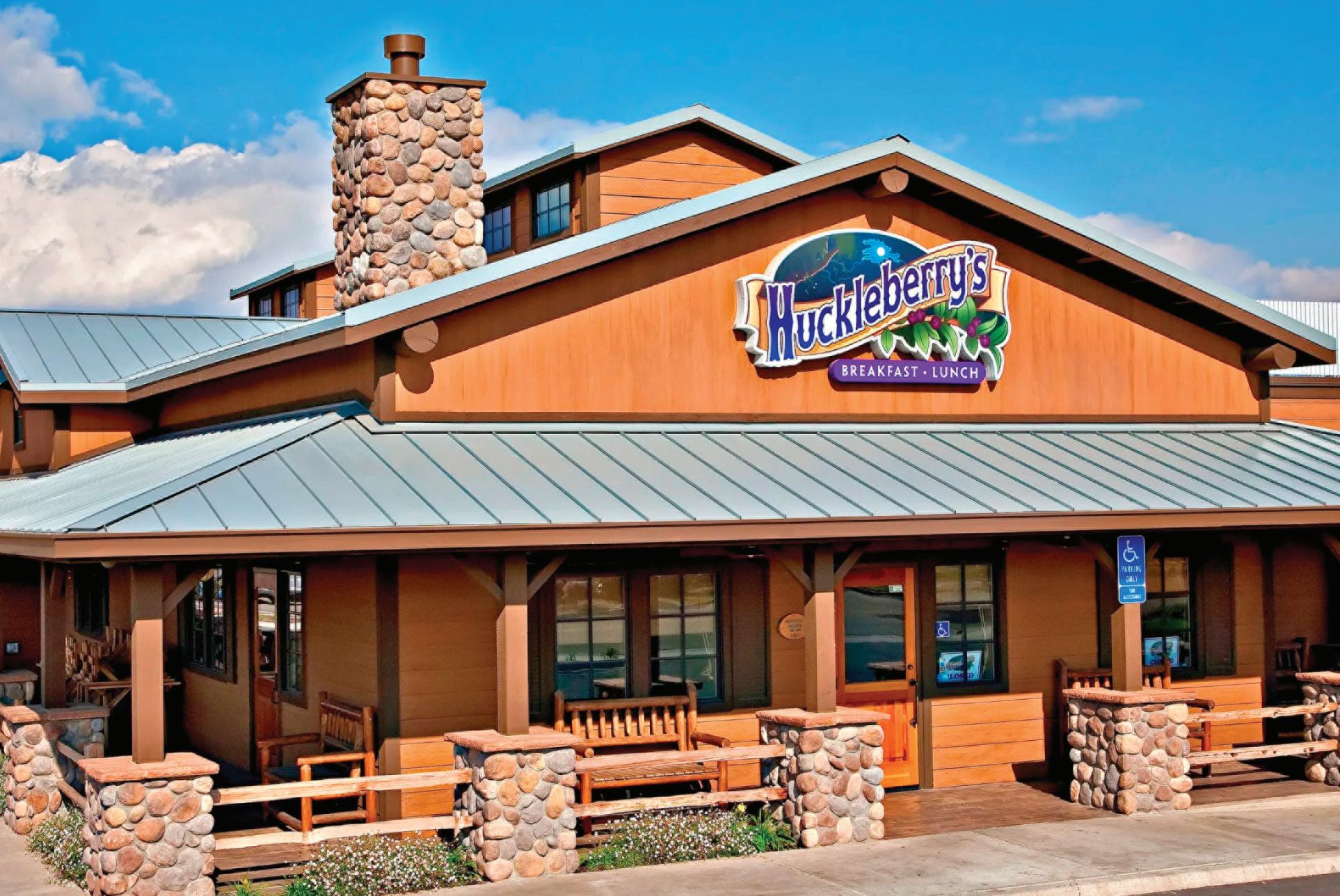
HUCKLEBERRY’S ENGRAVED IT’S OWN NICHE IN THE breakfast and lunch category. Walking into a Huckleberry’s is like stepping into the Louisiana “bayou”—at once being greeted by charming people, diners are captivated by the weeping willow tree, sparkling of fireflies and Zydeco music. Huckleberry’s calls its menu “Southern Cookin’ With a California Twist!”®. With differentiating items such as Mardi Gras Beignets, Fried Green Tomatoes, Huckleberry Stuffed French Toast and N’awlins Sandwiches, each bite further heartens guests with the home-like comfort of the South.
Operating hours of 7a.m.–3p.m. are valuable for finding quality team members, talented managers and dedicated multi-unit operators. Having a set schedule and the ability to be home every night helps to establish a work-life balance that can be difficult to find in the full-service restaurant industry.
Heritage Restaurant Brands purchased Huckleberry’s in 2016 and strategically put immense thought and refinement into the brand before jumping into expansion mode. The restaurant industry veterans spent the first 18–24 months investing in the brand by streamlining key systems
and processes. Once the blueprint for success was in place, the brand grew from seven to 36 units, with plans to reach 50 restaurants by 2026.
“We spent necessary time, energy, and resources on the very foundation of the brand before pursuing expansion,” says Heritage CEO Greg Graber. “The insights from our existing franchise owners were incredibly helpful. Their willingness to adapt and execute at a high level has positioned us well for accelerated growth.”
Huckleberry’s has a comprehensive site selection process and versatile restaurant footprint options. With flexible sizing from 3,000–5,000 sq. ft., the brand has accelerated with various building types, including in-line, end caps and free-standing buildings, with notable success in converting previous restaurant concepts over to Huckleberry’s.
“The best proof that Huckleberry’s is economically appealing is that our existing franchisees are eager to build more,” Graber says. “By taking existing three-daypart concepts and transforming them to our 7 a.m.–3 p.m. model, we’ve found tremendous value. AUVs went up with less operating hours and those franchisees are very happy—when they’re happy, we’re happy.”
With three new Huckleberry’s restaurants opening this year in Texas, the brand is set on continued expansion throughout the U.S. and is seeking existing multi-unit operators who are looking to expand their portfolio and take advantage of this flourishing segment within the restaurant space.
Multi-unit franchisee Raman Dhillon says, “Huckleberry’s has a special and compelling niche in the industry. The unit economics, captivating ambiance, uniquely Southern food, ever-increasing brand recognition and family-friendly operating hours—every aspect of the brand inspires us to fuel the momentum by adding more restaurants.

A franchise-friendly model: no royalties, local marketing, and national brand support.
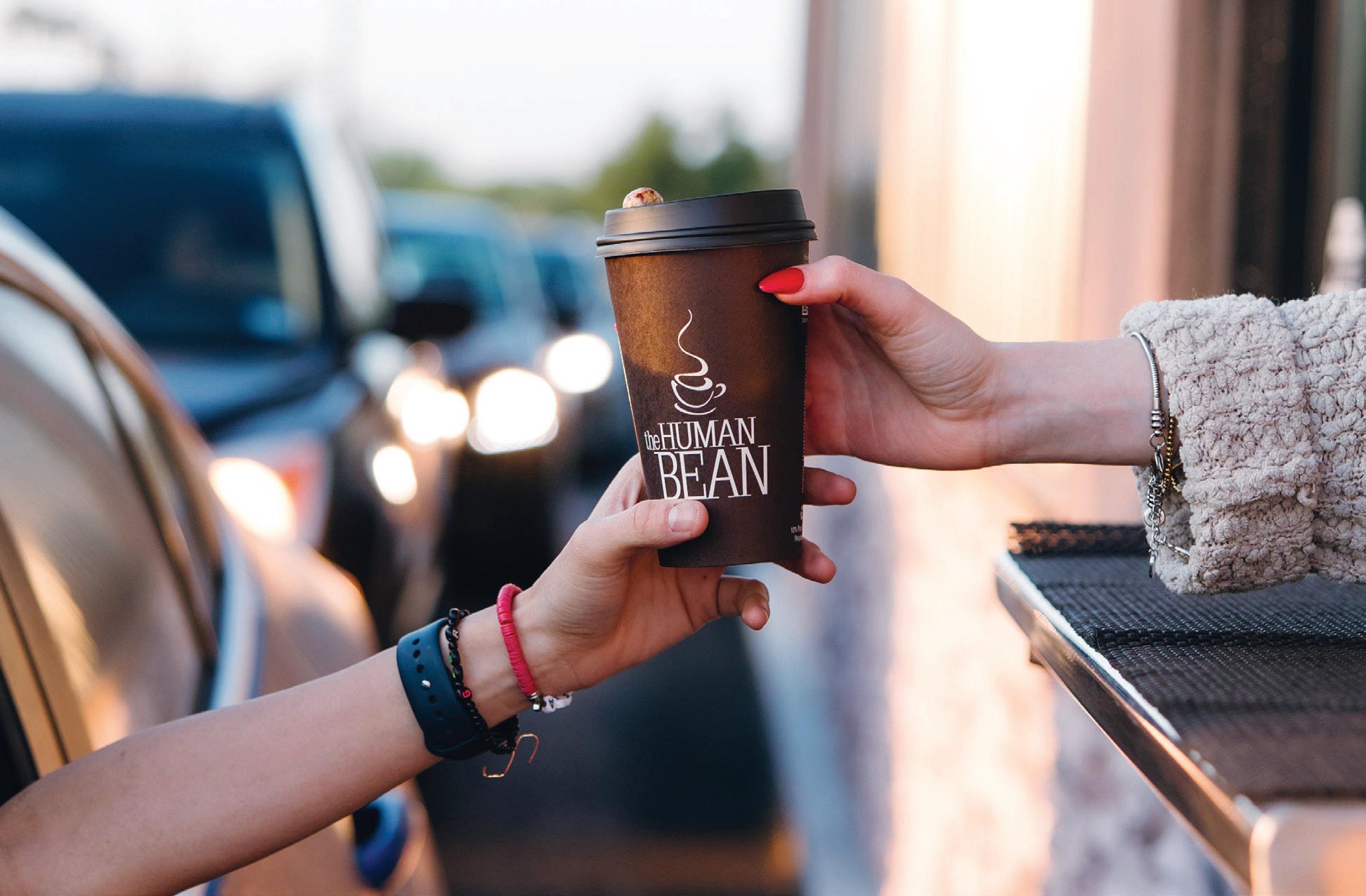
FOR FRANCHISE BRANDS, THE SWEET SPOT OF SUCCESS lies in a blend of nationally recognized trust and deeply rooted local connections. At The Human Bean, community involvement isn’t just a nice-to-have—it’s the heartbeat of the brand.
“Our national campaigns, like the recent Root Beer drinks launch, don’t just come with a flyer and a script,” says Janie Page, chief marketing officer of The Human Bean. “We equip our franchise partners with tools and ideas to make it their own—infusing each effort with local personality.”
From custom social media content spotlighting hometown baristas to dress-up days and themed events, franchise partners are encouraged to bring brand promotions to life in creative, community-centered ways. Each location becomes a unique reflection of its guests and neighborhood culture.

To support these efforts, franchisees receive a full suite of customizable materials—from bookmarks redeemable for kids’ drinks and teacher appreciation coupons to printed handouts and ready-made talking points
for baristas. These resources are designed not just to advertise, but to inspire real conversations and local connections.
Community events and sponsorships remain a cornerstone of local engagement. Franchisees are encouraged to identify causes and activities that resonate most within their area and lean into authentic partnerships. One standout example: Glenn Jones, a franchise partner in Pasadena, Maryland, regularly teams up with a local animal shelter to host pet adoption days. Not only does he donate $1 per drink sold during these events, but many of the pets find loving homes, demonstrating meaningful impact that extends far beyond the drive-thru.
“Success in local marketing isn’t just about traffic—it’s about trust,” Page says. “It’s in the faces that come back day after day because they feel seen and appreciated. We like to think of these personal touches as our way of putting a bean on top.”
Measuring success goes beyond sales. Franchise partners are encouraged to track the redemption of localized offers using tools like the Toast POS system and to monitor social engagement to see what resonates most. Often, it’s the simplest gestures that spark the most loyalty.
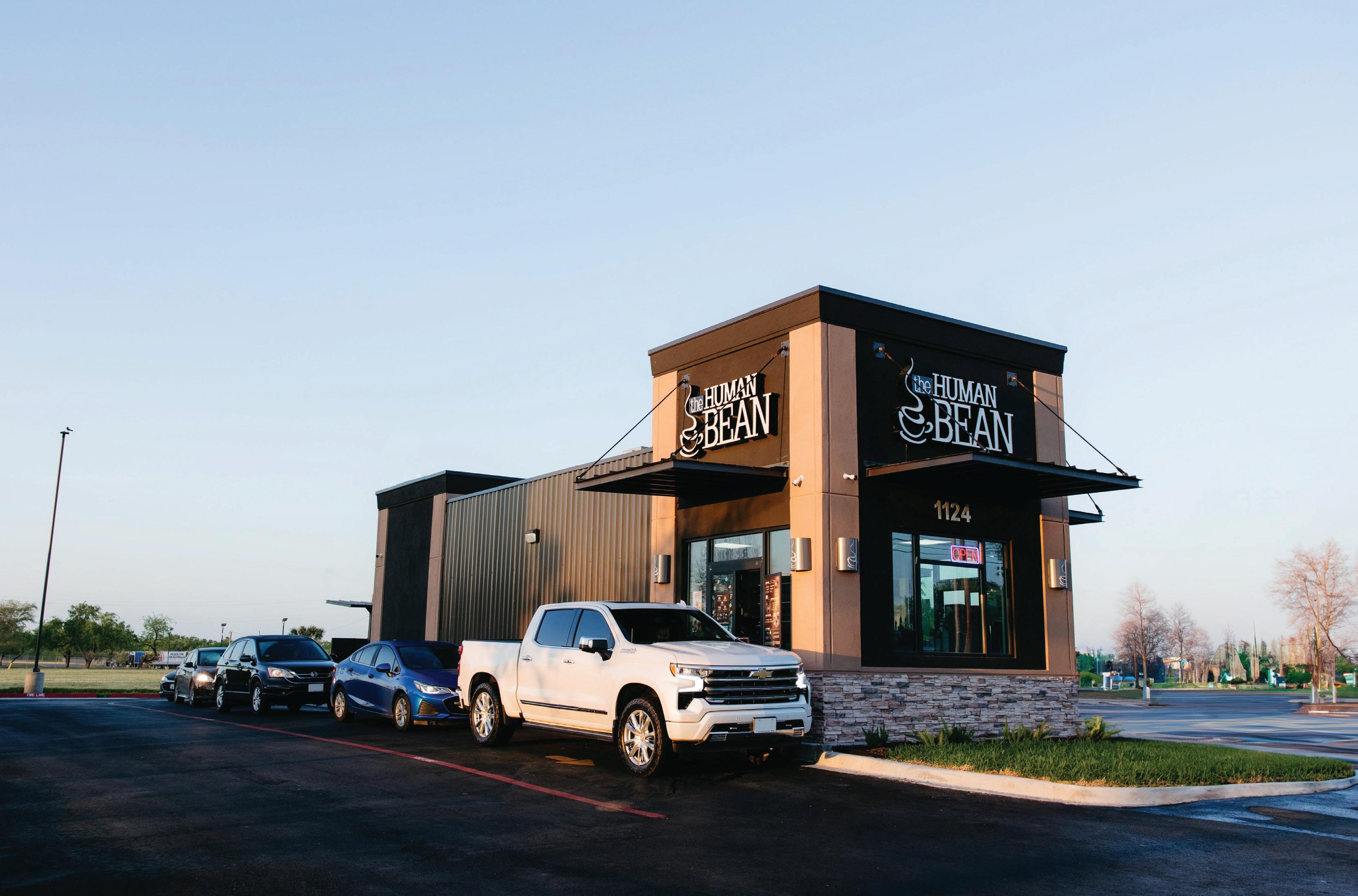
Social platforms—especially when used with a hyperlocal lens—can be a powerful amplifier. Photos of baristas with their favorite drinks, “Mocha Monday” drop-offs at neighborhood schools, or behind-thescenes peeks tend to generate a strong community response. And small, high-touch giveaways like sticker packs, gift cards, or a month of free coffee often outperform more elaborate promotions.
At The Human Bean, national consistency is paired with local heart. When franchisees are empowered to connect meaningfully with their communities, the result is not just brand growth—but a shared sense of belonging.










DELECTABLE SPREADS 2.
































































































































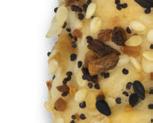
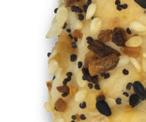































































































































































































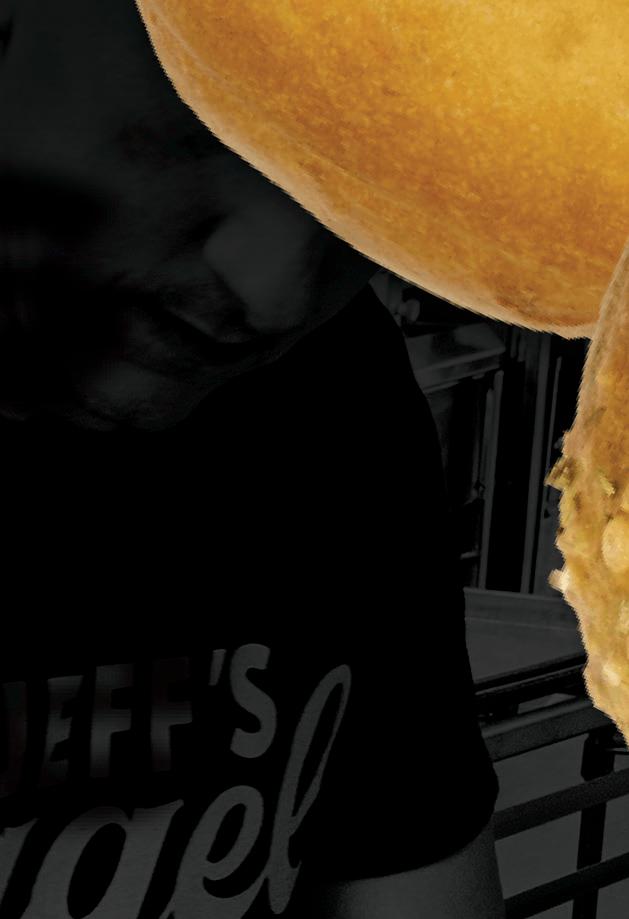

































































Restaurant operators are turning to salon suites for scalable, semi-absentee investments.

with 450 locations open or under development worldwide, offers a semiabsentee business model designed for entrepreneurs seeking to diversify their portfolios. This model allows franchisees to maintain their existing careers or pursue other interests while owning a business that demands limited day-to-day operations.
Phenix Salon Suites creates co-working spaces for the health, beauty, and wellness industry by providing individual suites for professionals to run their businesses. This flexible, tenant-driven model shifts the responsibility of daily operations to the professionals leasing the suites, allowing franchise owners to oversee the business on a part-time basis. For restaurant operators accustomed to managing labor-intensive establishments, this model offers a scalable, efficient that requires minimal staffing, often with just 0-1 employees.
Several members of the corporate team at Phenix bring restaurant industry experience. Philip Watson leads development at Phenix and previously worked as the director of franchise development with Tropical
Smoothie Cafe. Prior to becoming the CEO and president at Phenix Salon Suites, Brian Kelley, financed and operated over 100 locations with brands such as Jersey Mikes, Blaze Pizza, and Hardee’s. Their deep understanding of the operational demands faced by restaurant operators highlights Phenix as a compelling investment opportunity.
Franchisee, Nick Stauff, is one of several restaurant operators who transitioned to Phenix Salon Suites for its semi-absentee model. “As a busy restaurant operator, I was looking for a business that would allow me to step back from daily operations while still staying involved,” Stauff says. “Phenix’s model fits perfectly with my lifestyle. I have more time to spend with my family, and I can still manage the salon suites with minimal hands-on commitment.”
Another success story comes from Aaron Kumar, who operates several restaurant franchises and brought Phenix Salon Suites to the UK. “Phenix offers a great opportunity for restaurant owners looking to diversify their investments,” Kumar says. “The model is efficient, and the demand for beauty services is consistently strong, providing a solid foundation for success.”
Phenix Salon Suites allows beauty and wellness professionals to rent suites to operate their businesses independently. This creates a flexible work environment for stylists, estheticians, and other beauty experts while providing franchisees with steady rental income. For operators like Stauff and Kumar, this model offers an opportunity to earn revenue with minimal day-to-day involvement and staffing needs.
The company’s franchise growth speaks to its success, with many restaurant operators now choosing Phenix as a complementary addition to their business portfolios.
Phenix Salon Suites has been recognized for its growth and success, consistently ranking on Entrepreneur magazine’s Franchise 500® list, reflecting its strong performance and franchisee satisfaction. With its tenant-driven model, semi-absentee structure, and appeal to operators seeking diversification, Phenix Salon Suites continues to prove itself as a profitable, low-maintenance business opportunity with significant potential for success.
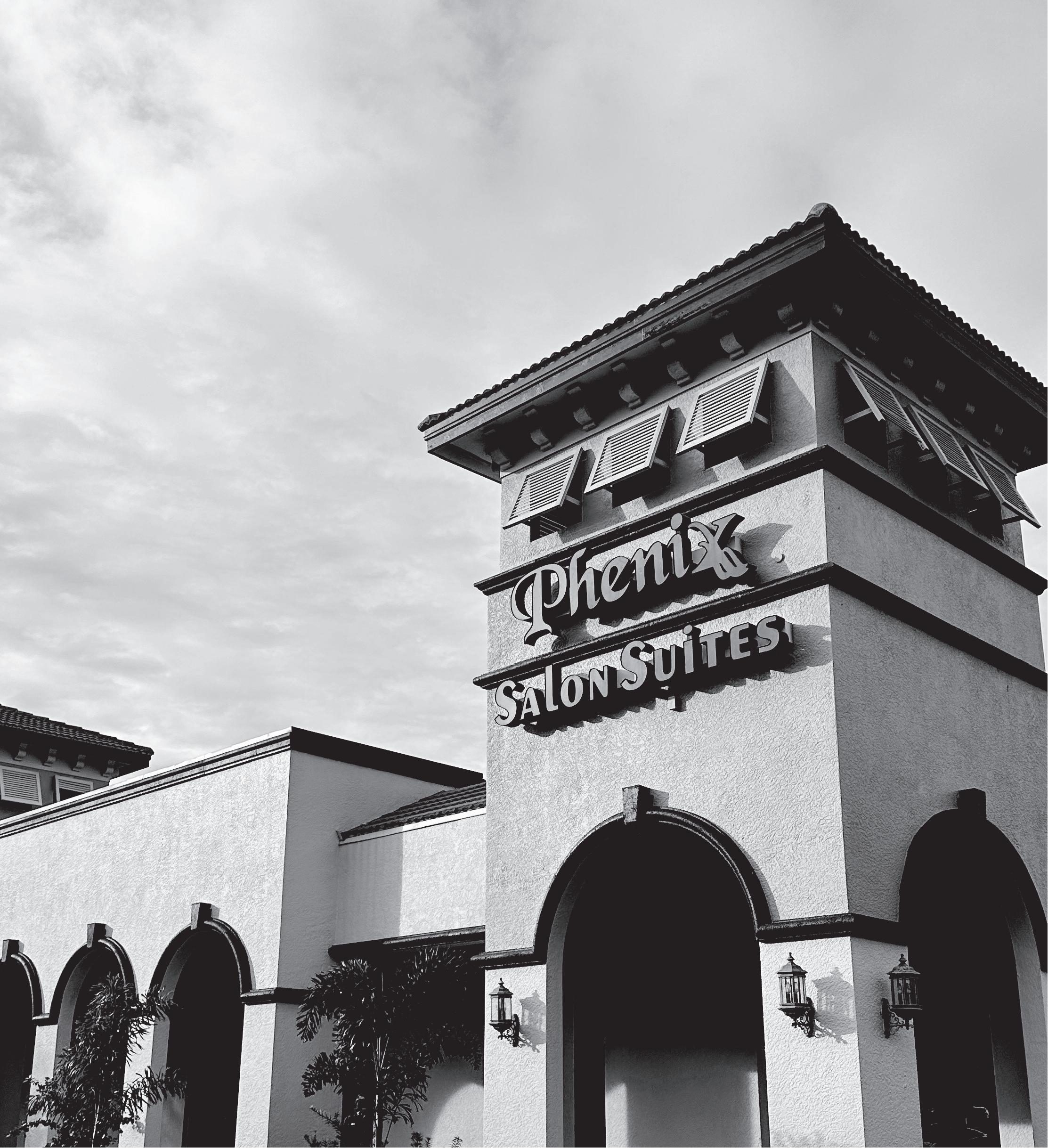










ACCORDING TO BUSINESS RESEARCH INSIGHTS, THE FRANCHISE MARKET is experiencing a robust compound annual growth rate of 9.73 percent, underscoring the significant momentum behind franchise expansion. By venturing into new territories, franchises can capitalize on untapped customer bases, leverage local expertise, and enhance brand recognition.
Slim Chickens is a growing fast-casual restaurant brand known for its cooked-to-order chicken tenders, wings, and Southern-inspired sides. The chain has a strong presence in many regions across the U.S. and internationally and has recently planned for expansion into the Midwest, Northeast, and California, along with other states that still have territories available.
“We’ve always been very deliberate with our development, particularly making sure our supply chain could keep up as we grow,” says Jackie Lobdell, vice president of franchise development at Slim Chickens. “The Northeast and California were regions we waited on until the timing was right. About a year ago, we felt confident that we were ready to move in. At this point, we have the supply chain infrastructure to support growth anywhere in the U.S.”
The clear consumer demand for better chicken concepts along with committed franchisees were some key drivers for Slim Chickens’ expansion. “We’ve always been selective—not just about the markets we enter,
but also the franchisees we partner with,” Lobdell says. “We want the right people and the right markets. We’ve surpassed our 300th location, and we’ve proven we can succeed across diverse areas.”
Slim Chickens has discovered that wherever it expands, the demand follows—because people love chicken. As the most consumed protein in the U.S., chicken naturally aligns with consumer preferences, making it a universal favorite that requires little persuasion to win over new markets. “As for our expansion, we are looking for markets that are high-density, high-traffic, and have strong consumer spending power,” Lobdell says. “We look for regions where we see demographics align with who our core customers are, so that we’re confident that Slim Chickens will perform well.”
Additionally, there’s a continued growing appetite in the U.S. for fresh, high-quality concepts that focus on doing one thing exceptionally well. “Chicken is what we do, and we’re experts at it,” Lobdell says. “We do it with variety and quality, alongside our 14 house dipping sauces. On top of that, we bring Southern hospitality and top-tier service to every location. That combination helps us stand out in any market.”
Some denser markets present unique real estate challenges, with tighter spaces, fierce competition, and limited availability of standalone drive-thru sites. “Our real estate model is highly flexible,” Lobdell says. “We have stand-alone drive thru, drive-thru only locations, non-drivethru urban footprints, end-cap drive-thru models, inline models, and we do a lot of successful conversions of existing buildings too. That flexibility allows us to fit into urban, suburban, and even non-traditional spaces effectively.”
Slim Chickens has already seen strong success in various markets, both high- and low-density. One high-density market is Maryland, where the franchise has three locations open and a fourth on the way. DDR Holdings, the franchisee behind these Maryland restaurants, was named Franchisee of the Year thanks to its operational excellence and ability to follow a proven model.
This overwhelming demand has validated Slim Chickens’ appeal, not just in Maryland, but in diverse markets across the U.S. where new openings consistently generate excitement and strong customer response. “Our franchise partners know they’re getting a scalable, proven model with operational simplicity, strong AUVs, and a real partnership,” Lobdell says. “That’s another big part of what makes Slim Chickens attractive.” ◗
To learn more about Slim Chickens visit slimchickensfranchise.com.










































Smokey Mo’s BBQ is emerging as a standout franchise opportunity built for scale. With $1.9M in average unit sales*, a loyal fan base across Texas, and recent expansion in cities like Bastrop and growing interest across Texas, the 25-year-old brand is entering its most ambitious growth phase yet.
Franchising has played a major role in the Smokey Mo’s success story. Now, the brand is actively seeking experienced operators to carry the torch into new territories. With flexible buildouts, multiple revenue streams (including dine-in, takeout, delivery, and catering), and a product rooted in Texas tradition, Smokey Mo’s checks every box for multi-unit owners looking to diversify with a proven yet approachable concept.
At the heart of Smokey Mo’s is a menu that blends time-honored BBQ staples with simplified, quick-service operations. Guests can choose from tender brisket, smoked turkey, pulled pork, sausage, and chicken, each slow smoked to perfection on site. Signature sides round out the experience, along with breakfast tacos and plates that drive early-day traffic. The approachable, customizable menu supports strong dayparts and high guest frequency, helping operators build a steady and sustainable business.


What truly sets Smokey Mo’s apart in today’s fast-casual space is its commitment to evolving both the guest experience and operational efficiency. The brand recently rolled out a completely revamped restaurant design, featuring a clean, modern aesthetic with warm, welcoming finishes. The refreshed layout optimizes both front- and back-of-house functionality, enhancing flow for staff and convenience for guests—whether they’re dining in or picking up an order.
Technology is also playing a key role in Smokey Mo’s next chapter. The brand has embraced a suite of modern tools designed to drive efficiency

and improve visibility across the business. From robust digital ordering platforms and integrated delivery management to realtime performance dashboards, franchisees are equipped with the resources needed to operate at a high level from day one. These tech-forward solutions not only streamline operations but also elevate the guest experience by offering convenience, speed, and personalization.
Backed by a seasoned leadership team and dedicated support across site selection, training, marketing, and daily operations, Smokey Mo’s offers a comprehensive playbook for success. With its simplified systems, adaptable footprint, modernized design, and strong unit economics, the brand is well-positioned for rapid growth in both new and existing markets.
For operators seeking a proven brand with loyal guests, standout economics, and room to grow—Smokey Mo’s BBQ is ready to serve. ◗
To learn more, visit smokeymosbbq.com/franchising/.

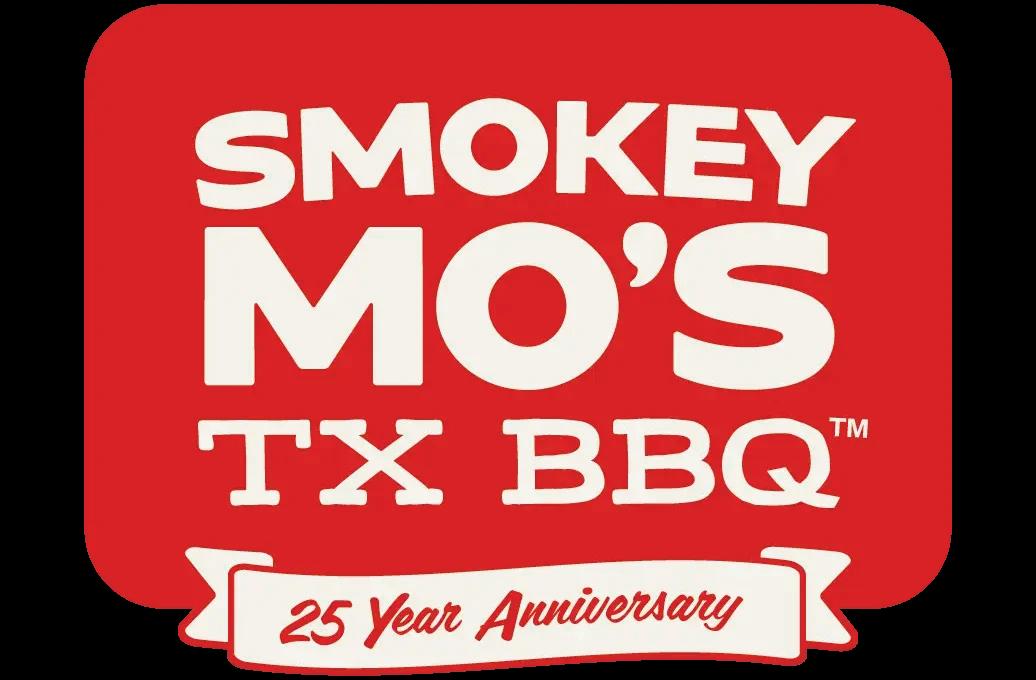












BY ADAM WORSHAM, CHIEF FRANCHISING OFFICER, VALVOLINE
IN TODAY’S INFLATIONDRIVEN ECONOMY, CONSUMERS ARE HOLDING ONTO THEIR CARS longer than ever. For many Americans, a car is the second-largest investment they’ll make after a home, and for some, it’s their first. That makes now a critical time to invest in preventive maintenance—and for operators, a prime moment to expand into the preventive automotive retail space.
For operators in the quick-service restaurant (QSRs) category, it’s an alluring prospect. QSRs have long set the gold standard for efficient, repeatable, high-volume service models. Auto maintenance, especially preventive care, is uniquely suited for this kind of operational structure. It’s higher-ticket, lower-frequency, and free from food-related issues like spoilage or complex inventory.
•
• # 24 ranking in Entrepreneur ’s 2025 Franchise 500
• 2025 Entrepreneur ’s ‘Top Brand for Multi-Unit Owners’
• 100 % franchise renewal rate (2025 Valvoline FDD)
• 13.37% average system-wide, same-store sales growth since 2021 (2025 Valvoline FDD)
But there are key differences: Valvoline Instant Oil Change’s franchise model offers operational simplicity compared to quick-service restaurants. With average guest tickets around $100, over 50 customer visits daily, and no food spoilage concerns, this is a unique opportunity to enter into a high-margin business (2025 Valvoline FDD). The preventive
automotive maintenance industry’s resilient and consistent demand, combined with shorter operating hours and streamlined staffing needs, creates an attractive investment proposition.
Transitioning from the quick-service restaurant model to preventive automotive maintenance, as exemplified by Valvoline Instant Oil Change, requires a shift in operational mindset but leverages similar principles of efficiency and scalability. Unlike QSRs, where customer experience hinges on rapid food preparation and high turnover, Valvoline Instant Oil Change focuses on delivering quick, high-quality preventive automotive maintenance with stay-in-your car services completed in about 15 minutes. The absence of perishable inventory streamlines supply chain logistics, while the predictable nature of preventive automotive maintenance— such as oil changes and tire rotations—ensures consistent opportunity. The labor requirements also differ significantly: while QSRs demand large teams, Valvoline Instant Oil Change averages 11 employees on payroll. With comprehensive, thorough training, Valvoline Instant Oil Change doesn’t require team members to have specialized automotive knowledge. Valvoline Instant Oil Change’s franchisees benefit from a proven system with standardized processes, award-winning training, and robust corporate support, enabling them to prioritize customer satisfaction and operational consistency over managing complex, food-related variables.

With over 900 company-owned stores, Valvoline Instant Oil Change understands the business intimately and equips its franchisees with readyto-use, proven solutions. This handson experience translates into the proprietary SuperPro™ operating process, a systematized approach that ensures consistent customer experiences across all locations.
For growth-focused operators seeking a proven collaborator rather than just another franchise opportunity, Valvoline Instant Oil Change’s selective approach offers long-term stability and support. The company’s emphasis on quality franchise relationships, backed by extensive corporate expertise and comprehensive support systems, helps position franchisees with the opportunity for expansion in the preventive automotive maintenance market.









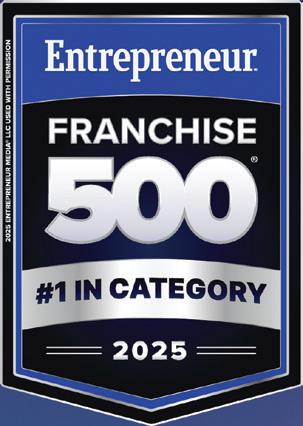












VEGETABLE SUSHI ROLL


Unlock the full potential of red meat in your business

The Aussie Meat Academy provides complementary training and inspiration for businesses using Australian Beef, Lamb & Goat.
Cuts, menu ideas & trends
Sustainable farming & animal welfare
Consumer trends
Culinary operations training
Meat grading for consistency
Front-of-house staff training
Butchery training & insights
Supply forecasting
REACH OUT NOW Put our industry experts to work!



